Cottage garden ideas – 29 inspirational ways to add quintessential charm and bountiful blooms to your plot
Add a touch of romance to your garden with rambling roses, fragrant herbs and beautiful borders
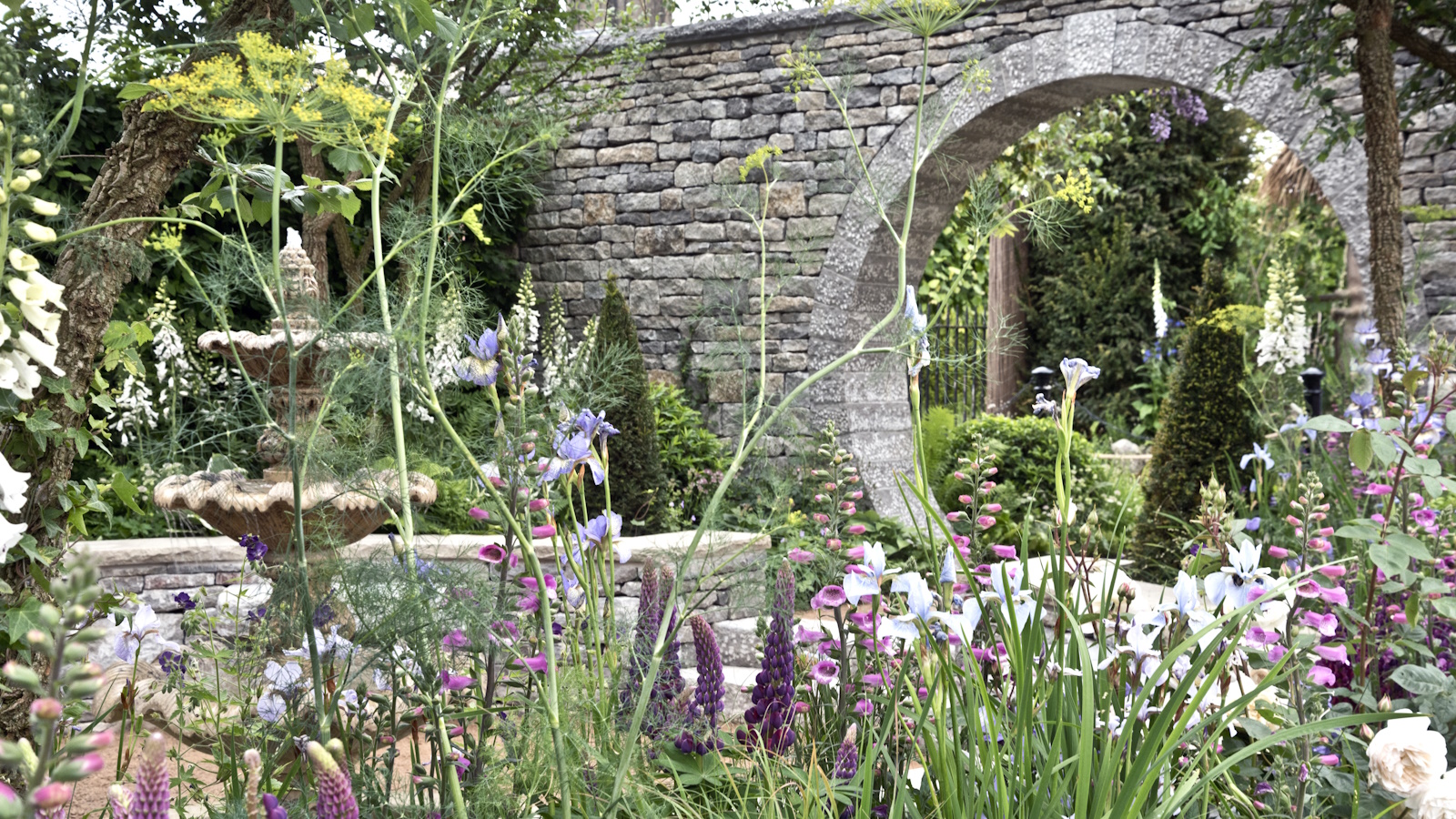
- 1. Get rid of the grass
- 2. Let your planting cover all the soil
- 3. Frame your trees with blooms
- 4. Add screening to your cottage garden
- 5. Make your own cottage garden rules
- 6. Pick the right flowers
- 7. Install raised beds to create a sense of order amongst chaos
- 8. Add vertical interest with climbing plants
- 9. Grow plants overhead for instant drama
- 10. Go for a pink and mauve color palette
- 11. Plant a wildflower meadow in your cottage garden
- 12. Use paths and steps to zone areas
- 13. Blur the boundaries
- 14. Fill your cottage garden with containers
- 15. Bring in the bees
- 16. Introduce fragrant plants
- 17. Give your cottage garden a modern twist
- 18. Pick large roses
- 19. Add a secluded spot to sit
- 20. Plant around a focal point
- 21. Make a vintage display
- 22. Get the picket fence look
- 23. Make doorways pretty
- 24. Escape to nature with dreamy lilac
- 25. Plant in romantic drifts
- 26. Add stunners to fill borders
- 27. Choose a cottage garden classic
- 28. Choose the right hard landscaping
- 29. Consider a cottage garden water feature
- FAQs

If you are looking for cottage garden ideas to create a charming, characterful plot, then start with a vision of what the space could be. Is it tumbling climbers creeping along walls, romantic drifts of softly colored perennials, or vintage containers bursting with aromatic flowers and home-grown crops?
Cottage garden ideas are guided by nature, working with and not against the surrounding area. They paint the most idyllic of pictures: old stone walls laden with moss, climbers creeping and tumbling over fences, colorful borders full of flowers, and the scent of roses perfuming the air. Full of beautiful plants, tumbling blooms and rambling vines, a cottage garden is more an act of editing rather than building, drawing in the natural world around your plot.
Cottage garden ideas tend to focus on ‘slow gardening’, allowing self-seeding blooms to establish including foxgloves and ferns that will self-colonize, alongside romantic roses and climbing clematis vines. If you are at the beginning of planning a cottage garden, these 29 inspirational ideas will give you a wonderful head start.

Cottage garden ideas
Cottage garden plants tend to produce abundant, floriferous and colorful blooms. Roses, lavender and tall spires of lupins, foxgloves and hollyhocks are the stars of the show. This style of planting softens the look of a garden and brings you up close with scent, foliage textures and a tapestry of soothing garden color schemes.
1. Get rid of the grass
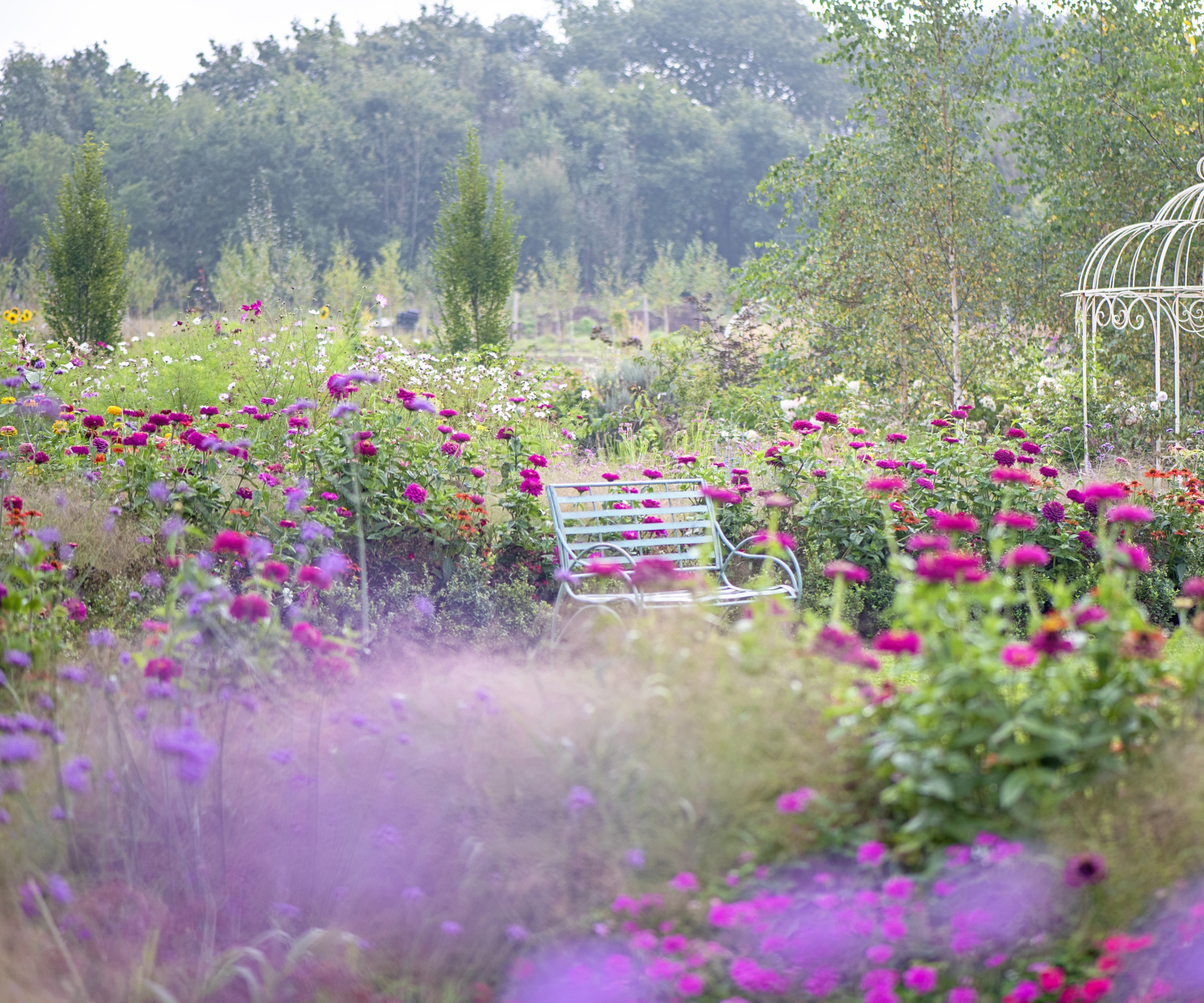
So, if you are keen to explore cottage backyard ideas and front yard cottage garden ideas, one common principle is losing the lawn. In a traditional cottage garden, there is no room for a lawn. Growing space is at a premium and every inch should be planted, whether that's with pretty flower bed ideas, delicious fruit or crops or scented herbs.
‘Typically the cottage garden surrounds a quaint home adorned in scented roses and climbers, is a confined space with no lawn, and intersected with paths,’ says garden expert Leigh Clapp. Pathways provide access and structure to the space while rich planting in the garden provides abundant interest and character.
2. Let your planting cover all the soil
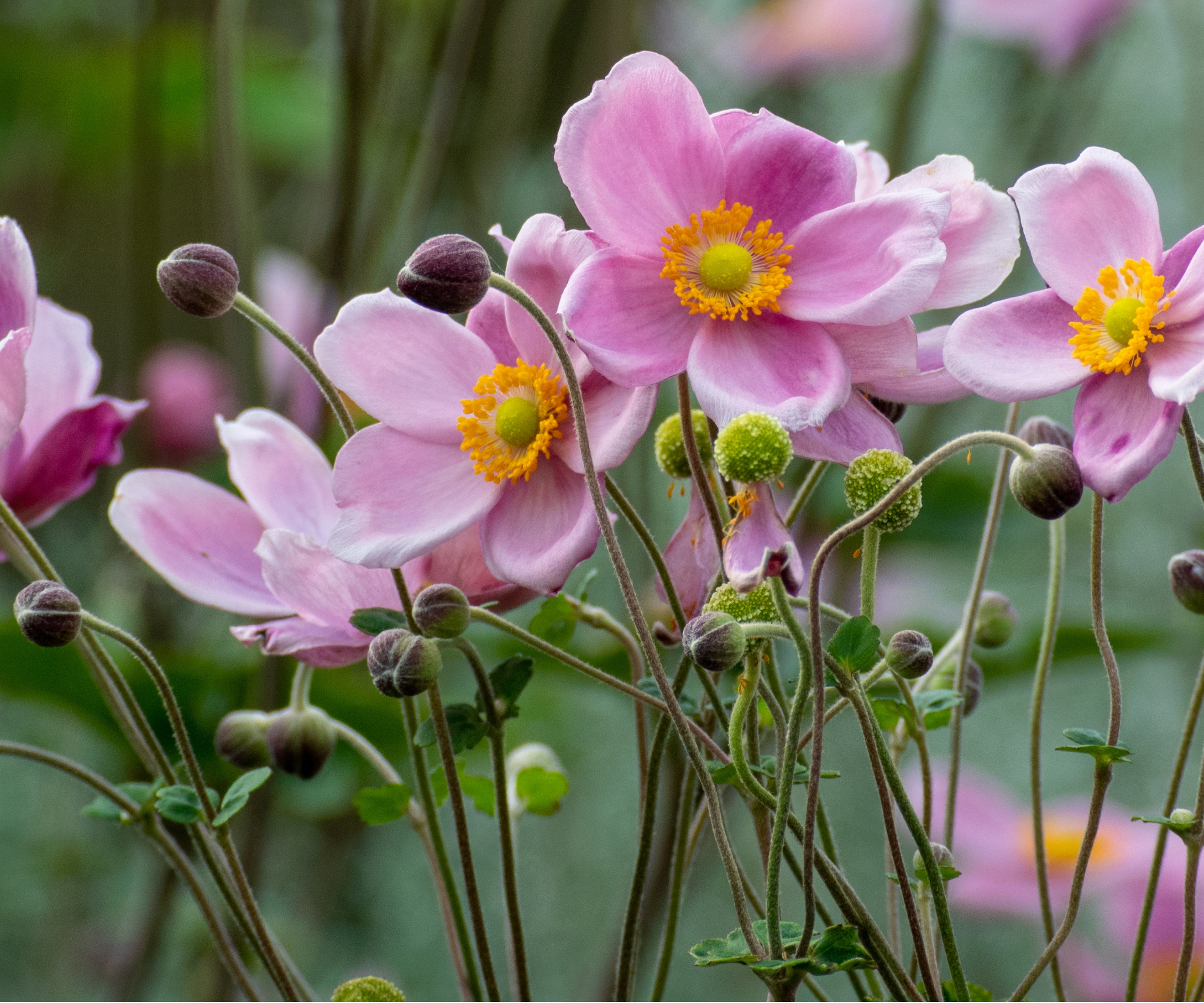
Exposed soil is a clear marker of a curated garden which stands in opposition to the freer cottage style. In order to avoid this, incorporate creeping and trailing ground cover plants into your scheme.
'Creeping thyme, wall germander and snow in summer are beautiful plants that can help to cover bare soil and fill borders,' says Rachel Bull, head of gardens at Homes & Gardens. 'To create a more natural look, you can also add rocks and boulders around which the plants can snake around.
'Don't forget to also add height to your borders,' Rachel adds. 'I love using spires and spikes in my flower beds, think delphiniums, lupins and foxgloves. The best flowering climbers and the best flowering shrubs will ensure that there is balance in your scheme.'
Creeping thyme live plants are available from Walmart.

Rachel is a gardening editor, flower grower and floral designer. Her journalism career began on Country Living magazine, sparking a love of container gardening and wild planting. After more than a decade writing for and editing a range of consumer, business and special interest titles, Rachel became editor of floral art magazine The Flower Arranger. She then trained and worked as a floral designer and stylist in London for six years, before joining the Homes & Gardens team.
3. Frame your trees with blooms
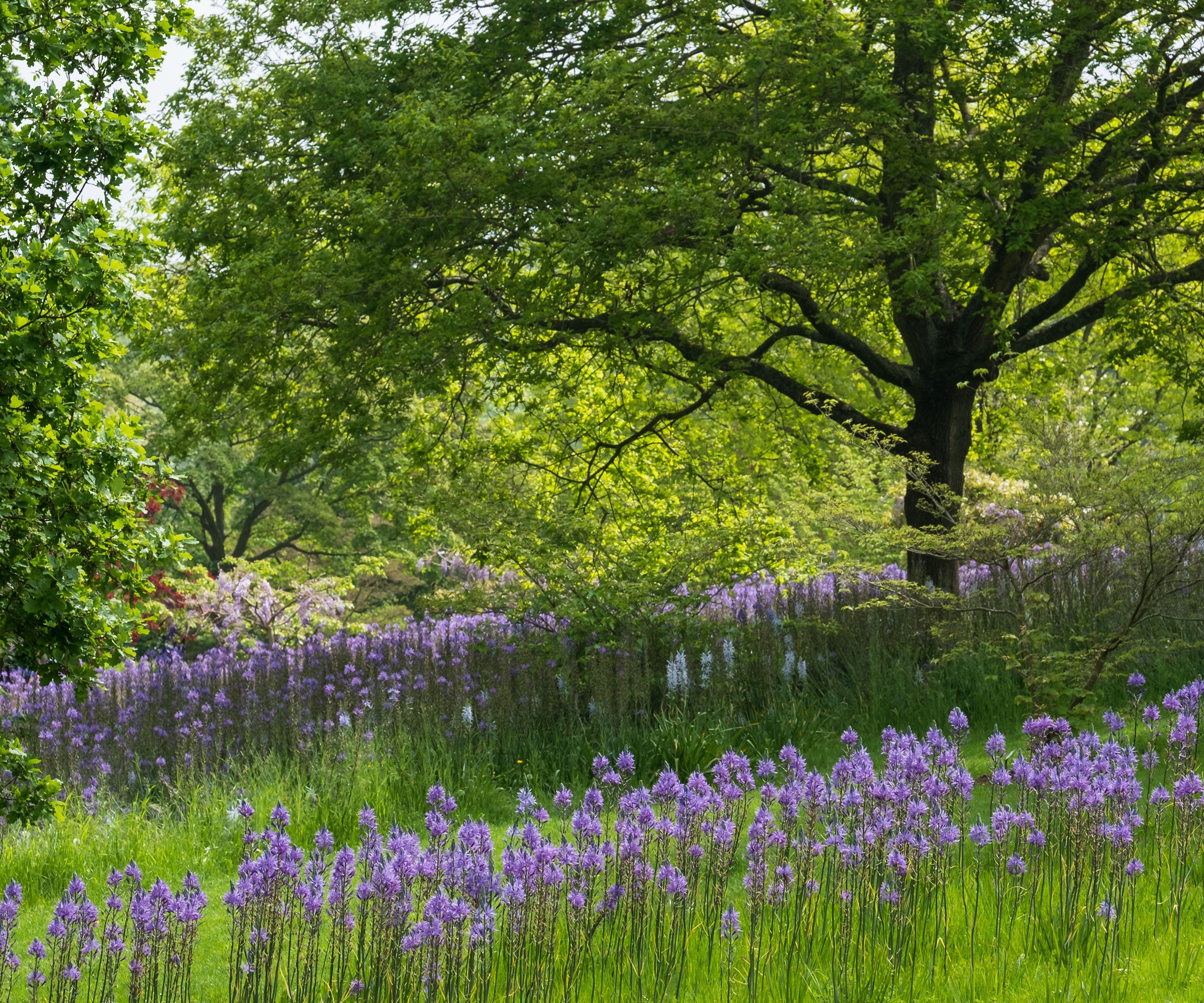
Underplanting your trees with seasonal blooms is a great way to add interest to an otherwise uninspiring part of your garden. There are many different approaches to landscaping around trees, but bulbs are one of the easiest options. Here, vibrant red tulips interspersed with naturalized grape hyacinths and dots of yellow tulips and daffodils make a painterly palette in this otherwise dead space.
The beauty of bulbs is that they are perfect for any size of garden, will divide and naturalize over time, and also require minimal maintenance. Plant a mix of the best summer bulbs and the best spring bulbs to ensure a continuous display throughout the warmer months.
Spring bulbs are available from Walmart.
4. Add screening to your cottage garden
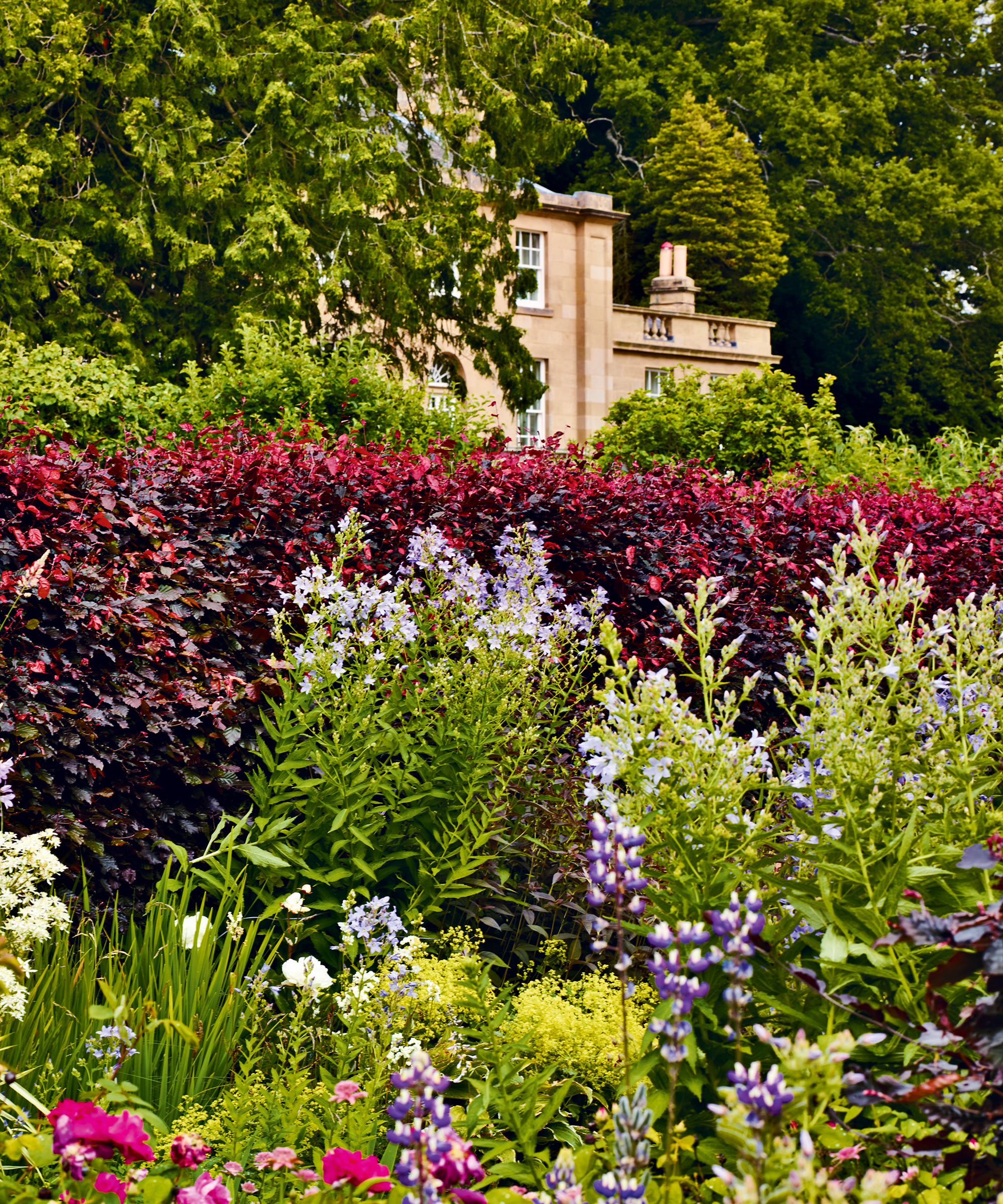
Of course, planting pretty blooms is the first part of learning how to plant a cottage garden border, however, hard landscaping is also very important in creating an aesthetically pleasing space.
In addition to providing valuable privacy, garden screening ideas will help you to zone your garden and divide the planting into specific spaces. When looking for screens to use in your cottage garden ideas, opt for a natural material such as wood to help it blend in. Alternatively, opt for an artfully aged decorative metal design for a bold statement that will add interest all year round.
5. Make your own cottage garden rules

Rooted in the romance of quintessential English garden ideas, cottage garden ideas are a firm favorite and can be found alongside a wide range of house styles. No two cottage gardens are the same – your cottage garden ideas will be a reflection of your own tastes as well as drawing ideas from the exterior design of your home.
‘There is no typical cottage garden – and that’s one of the joys of cottage gardening,’ says Margaret Hensel, author of English Cottage Gardening for American Gardeners, available at Amazon. ‘Cottage gardens are individual, personal expressions. I have visited hundreds of gardens in both the UK and the US, and that is one of the points. They are the children of a gardener’s imagination and the many different sites, houses and cottages.’
Today, cottage gardening is more of an ethos than a set of rules to be followed. It's about embracing nature's beauty and intricacies, rather than forcing it to conform. Rambling, rather than rigid. Imperfectly charming, rather than perfectly chic.
While certain established cottage garden ideas will help you to get the overall look and feel, you should embrace the freedom to create a scheme that is truly unique to you and your home.
6. Pick the right flowers
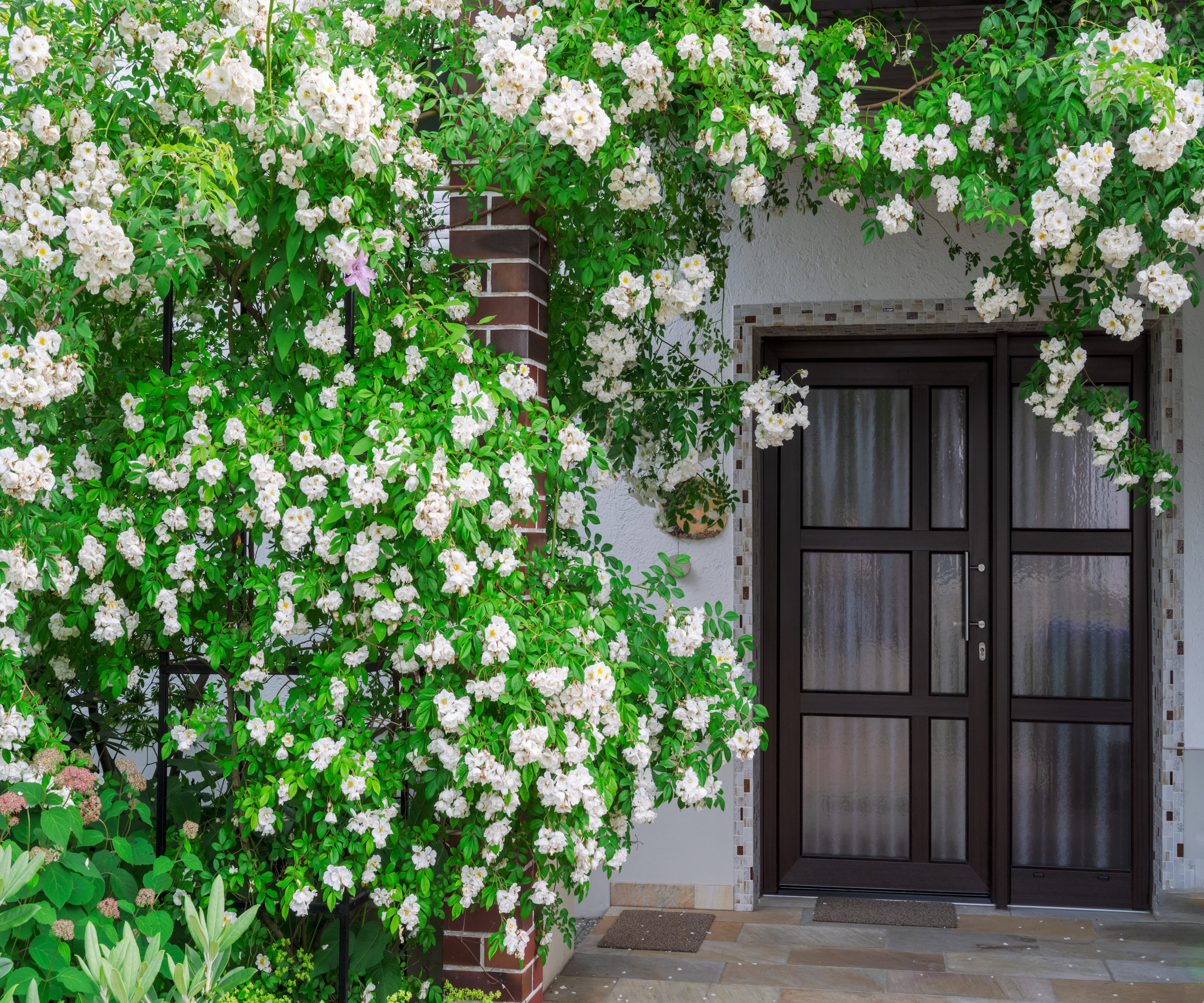
According to garden designer Tracy Foster MSGD, historically, as well as being pretty to look at, the plants in a cottage garden earned their place by being easy to grow, useful, edible or a mixture of all three. When deciding on your planting schemes, take inspiration from kitchen garden ideas as well as companion planting ideas to help you combine the best mix of blooms and crops.
It’s the versatility of the cottage garden style which appeals too. Tracy suggests that ‘the resulting symphony of shape, texture, color and scent in a seemingly unstructured layout can bring a bucolic charm to any plot, even in the heart of a city.’
For a truly authentic cottage look, there will be a variety of different shapes and forms in the border. Landscape and garden designer Ana Mari Bull MSGD recommends using history as a guide, ‘where possible look at modern cultivar equivalents of the plants which would have originally grown in a Victorian cottage garden. Roses are the obvious choice but they must be scented.’
Tracy Foster adds height with hollyhocks, delphiniums and foxgloves. For other flower shapes try the flat panicles of achillea, ball-shaped inflorescences of globe thistle (Echinops ritro), or cheerful daisy flowers of Leucanthemum or Rudbeckia.
7. Install raised beds to create a sense of order amongst chaos
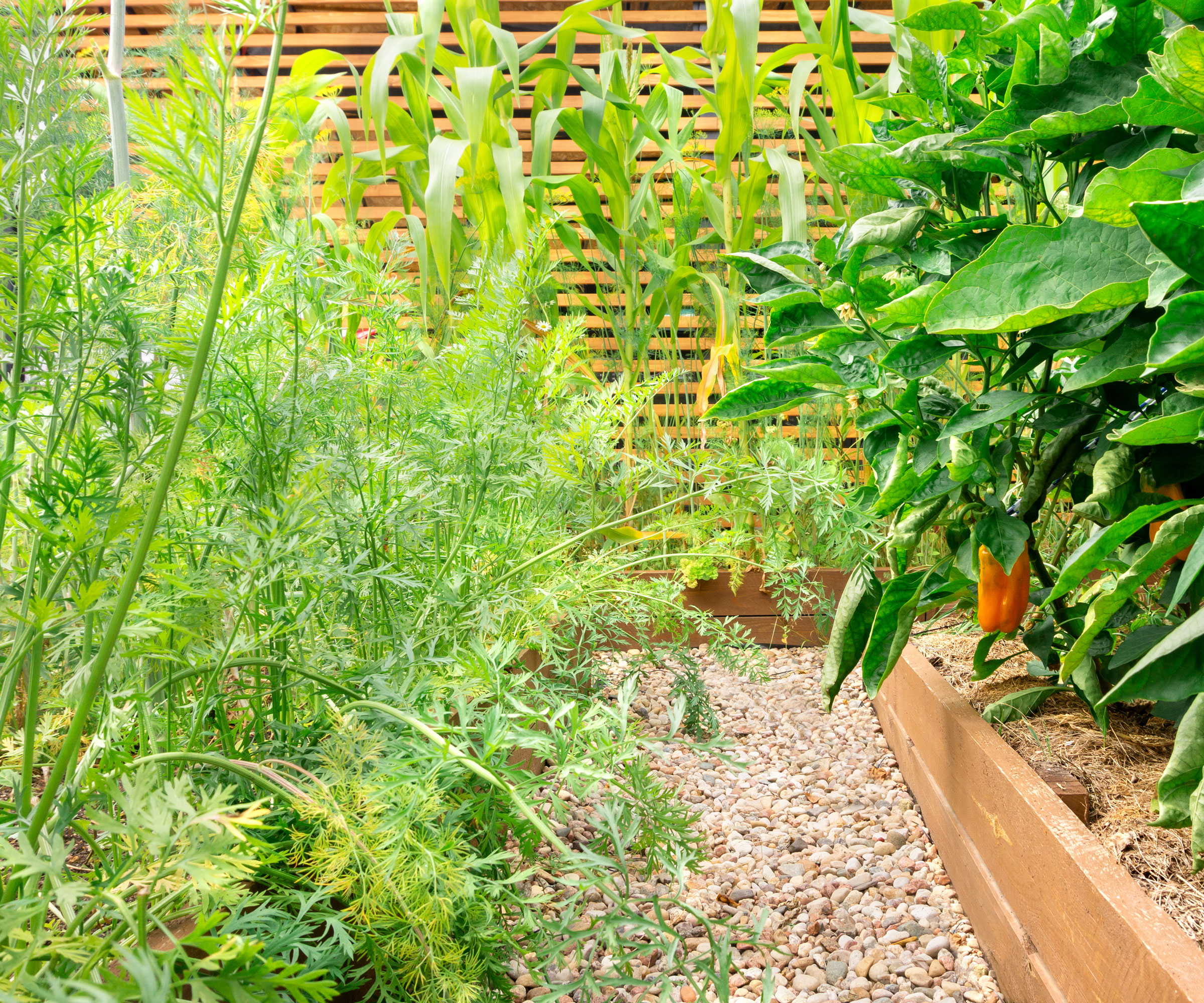
As has already been said, the beauty of cottage garden ideas is that there are no rules. Therefore, you don't necessarily have to embrace the floral free-for-all of traditional cottage style.
There are plenty of raised bed ideas that will help to bring order to your space, while still letting you indulge in the vibrant and chaotic planting of your cottage garden ideas. Confining plants to the boxes not only makes your garden easier to navigate and tend, but also makes it easier to combine plants and crops together in one place – as you would when planning a kitchen garden.
8. Add vertical interest with climbing plants
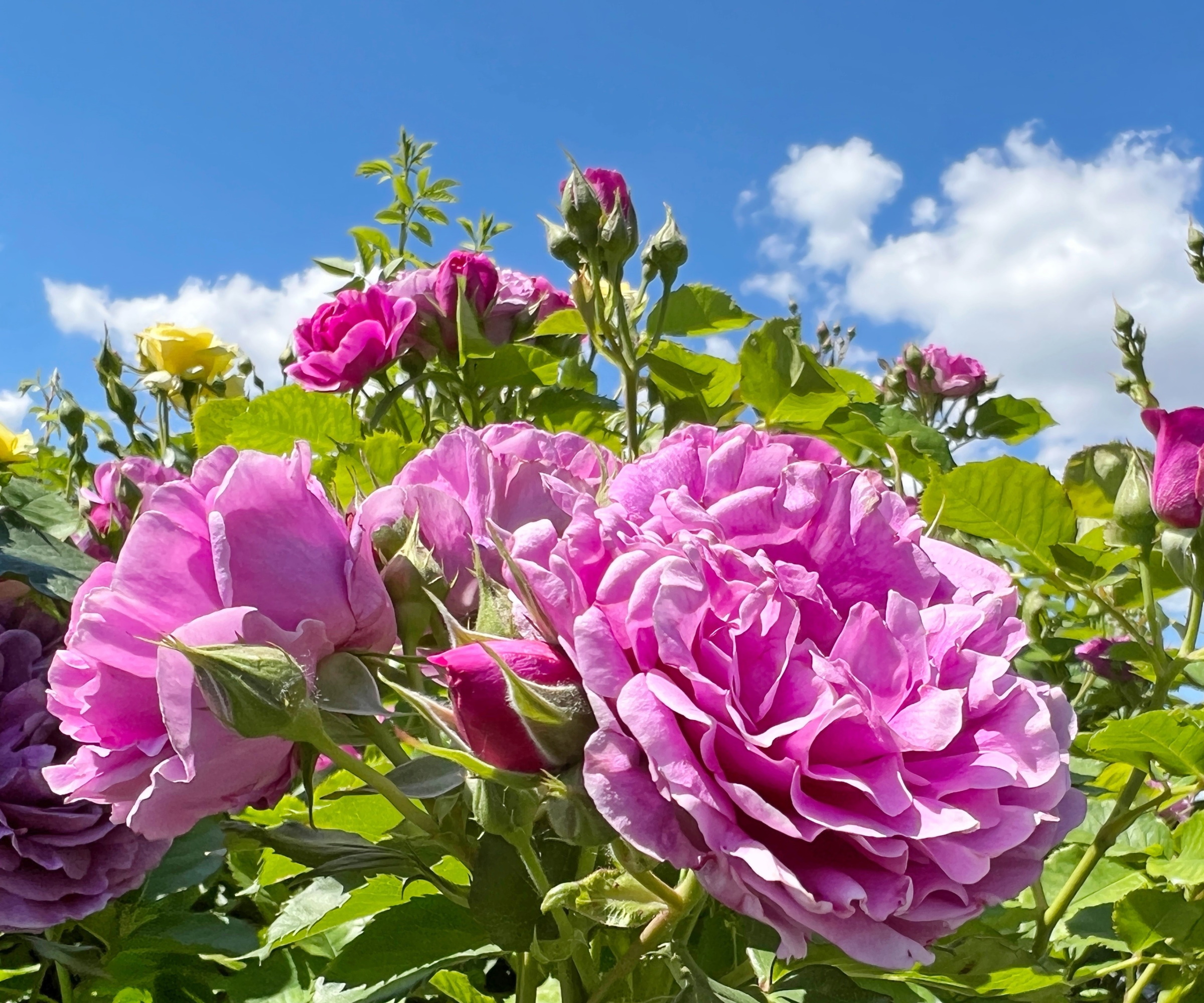
If you’re looking for cottage garden ideas that will create the most impact, then start with the best climbing plants. There are so many varieties that can be grown upwards, and so many benefits to adding them – from covering an unsightly wall to filling the air with fragrance.
For millennia we have used climbing plants to green a surface or espaliered fruit against a warm wall. Arbors, arches, tunnels, trellises and pergolas can become lovely focal points adorned in profusely flowering roses entwined with clematis for example.
Roses are a classic option - consider a rambling rose, available from Walmart - which will grow more quickly than a standard climber and cover a larger surface area. If you are thinking about adding roses to your cottage garden ideas, be sure you know how to plant roses and how to prune climbing roses for maximum flowers.
9. Grow plants overhead for instant drama
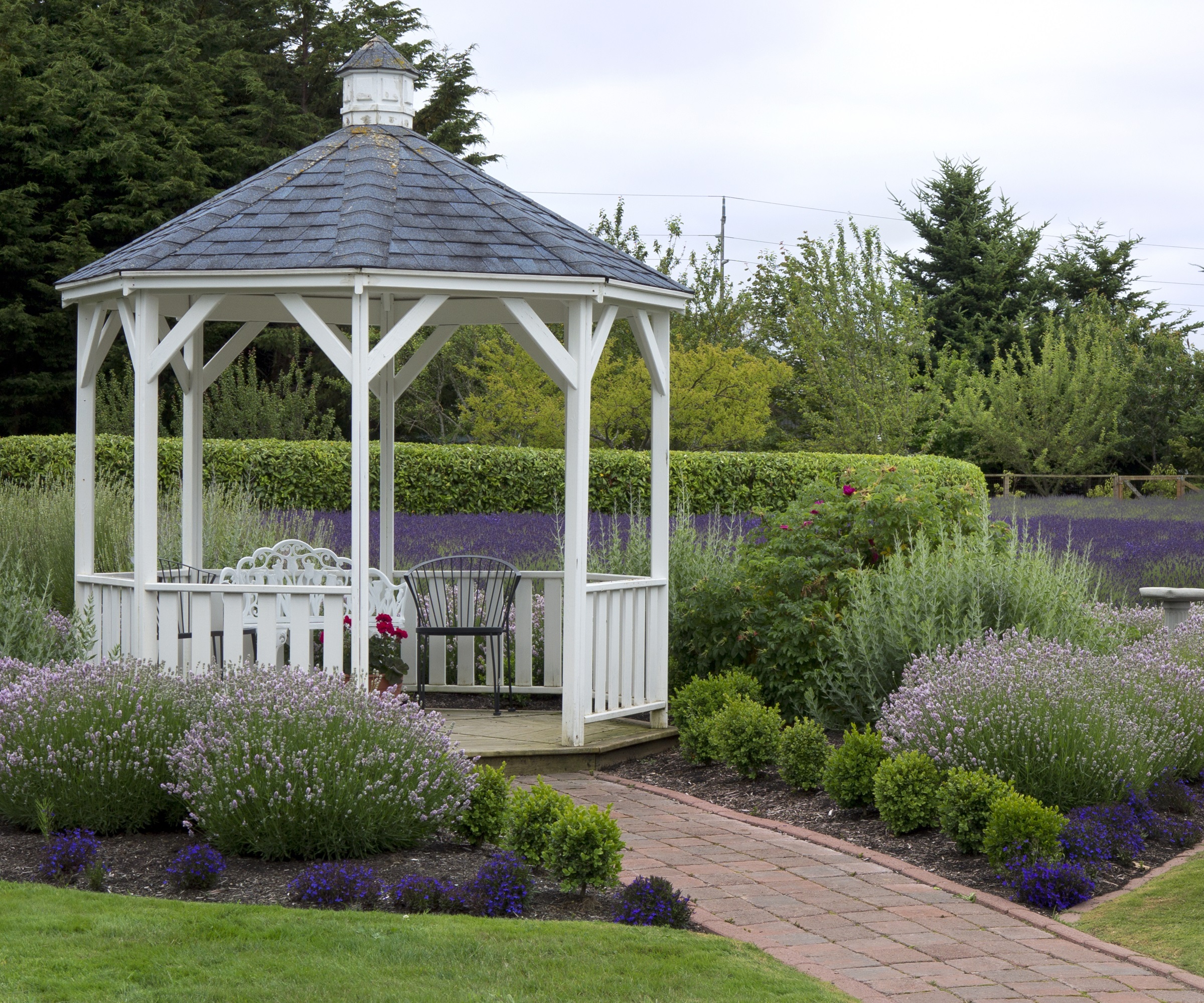
As well as growing upwards, explore the possibilities of growing plants overhead in a cottage garden, for a truly immersive experience.
Pergola ideas is ideal for this purpose and can also create a private shaded, sheltered area to escape the midday sun.
If you know how to grow wisteria, then it's the obvious choice, with its twisted branches and glorious drapes of purple flowers; but roses, clematis, honeysuckle and jasmine are all good cottage garden plants to provide overhead interest.
10. Go for a pink and mauve color palette
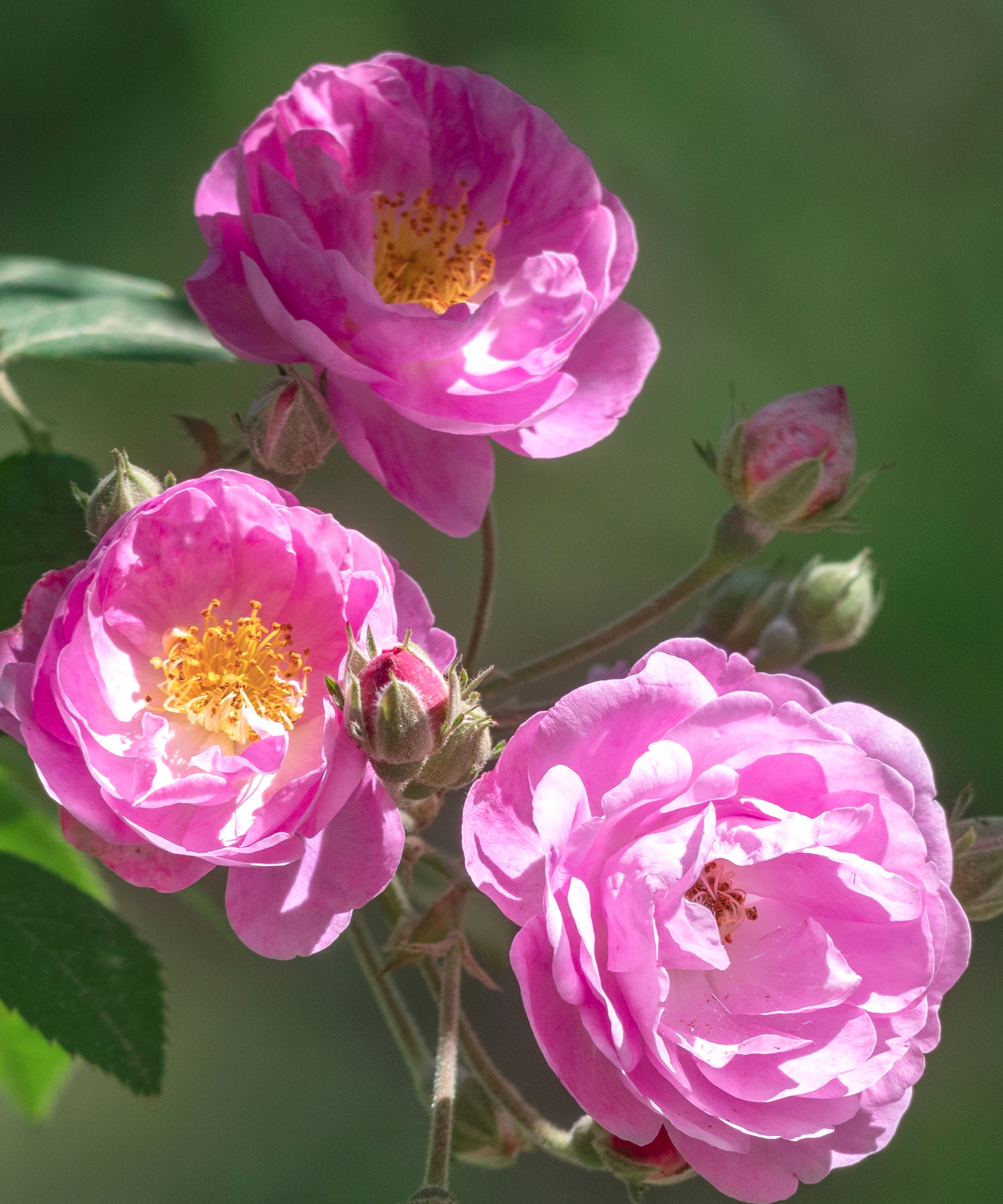
Verbena bonariensis in a mass of jewel-toned colours
Choose the right color scheme for your cottage garden look and you’re halfway there. A muted palette of soft pinks and mauves (perhaps with a dash of purple to add some drama) always works, especially if you keep things simple and stick to it.
Add in some touches of vintage cream and set the whole thing against a neutral backdrop of green and the result will be positively painterly. As you get more confident mix in some pale greys, washed-out blues and silvery foliage to add depth and complexity that will segue beautifully with your look.
Where to start? With drifts of heavenly mauve lavender and ruffled old-fashioned pink roses (of course), as well as jewel-toned purple and magenta Verbena bonariensis that bloom for much of the summer. For fall and winter interest, learn how to grow spindle trees, Euonymus europaeus, which will produce pink and orange seed pods from late summer.
11. Plant a wildflower meadow in your cottage garden
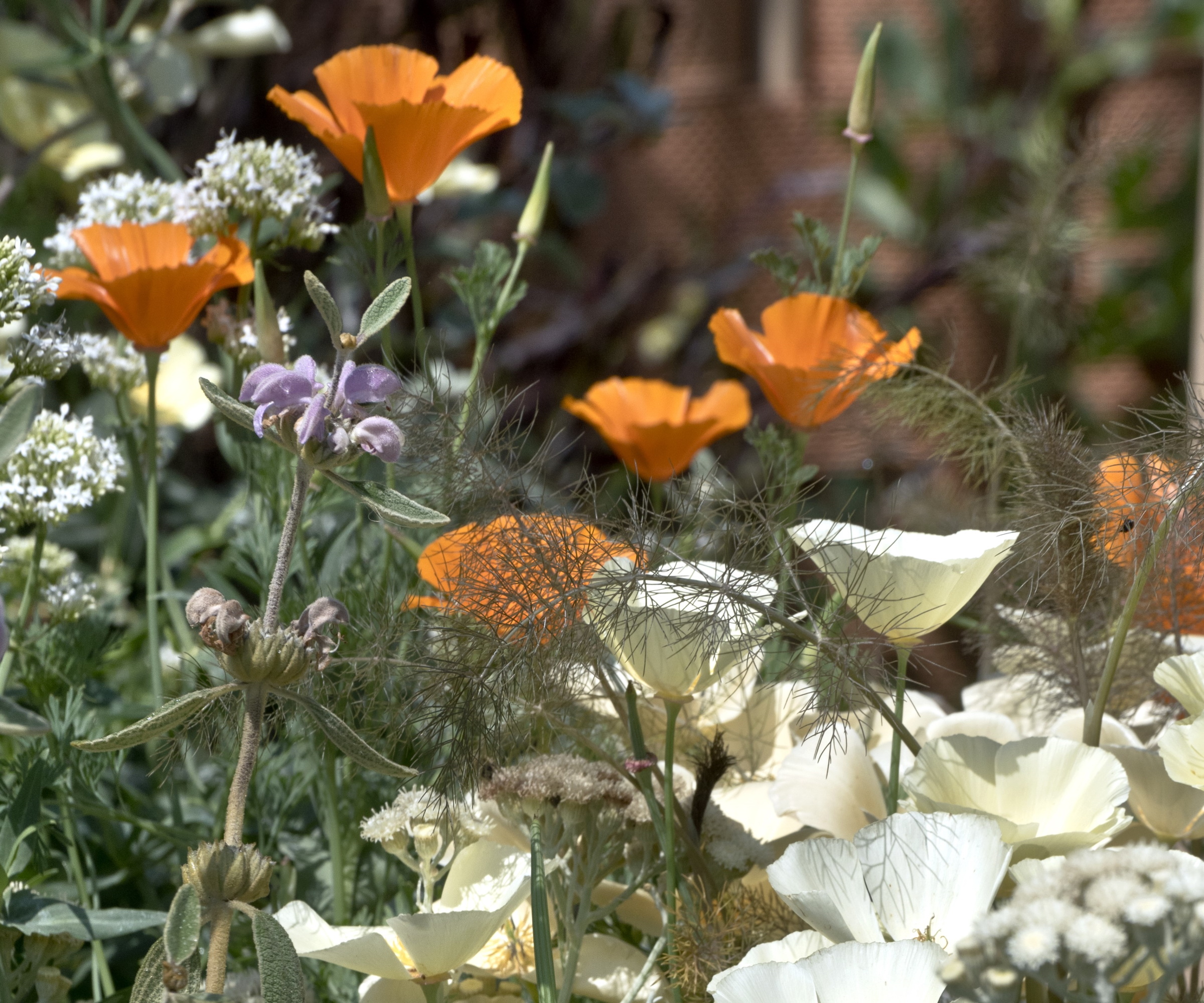
One of the most romantic cottage garden ideas, adding wildflower garden ideas to your borders creates a sense of areas being reclaimed by nature, and, as they will be packed with plants for pollinators, is a wonderful way to attract these precious insects to your plot.
Meadows can be a glorious addition to the garden, whether purely wildflowers or enhanced with other species. A meadow area doesn’t have to be big – you can sow seed in neglected corners or even large containers, as long as the area gets good sunlight. Classic seed mixes can include ox-eye daisies, marigolds, teasel, chamomile, foxgloves and poppies, but you can also include ever-popular cosmos and Ammi majus.
If you are hoping to introduce a wildflower meadow to your cottage garden ideas, you must know how to plant a wildflower meadow to ensure you achieve a thriving tapestry of blooms. Wildflower seeds are available from Walmart.
12. Use paths and steps to zone areas
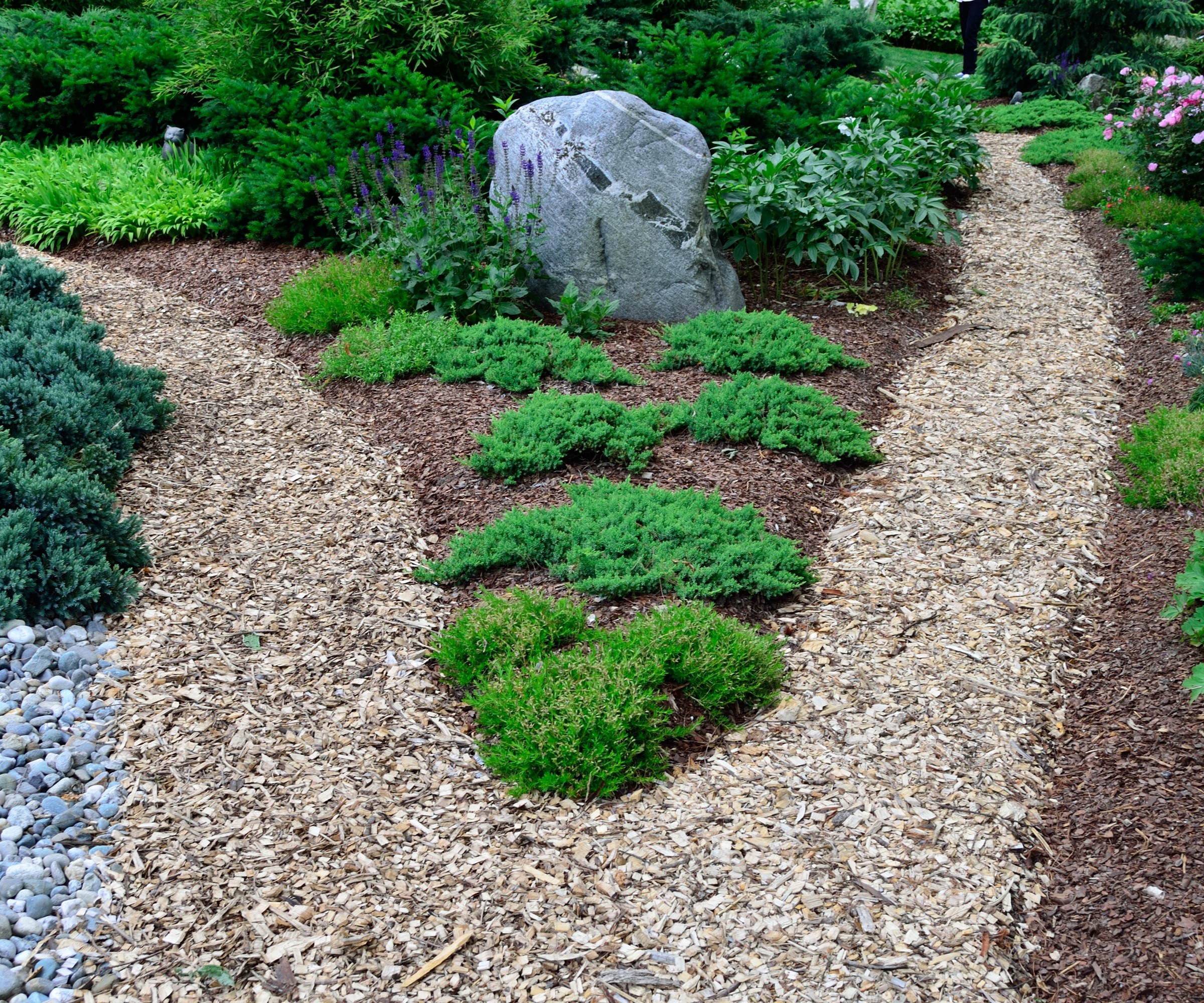
In times past, cottage gardens didn't have large, pristine lawns, but were intersected by winding paths giving access to different areas.
While today there is no reason why you can’t embrace a luscious lawned area, consider how effective a meandering pathway would look to help your eye – and feet – travel through your cottage garden ideas.
'Paths are important as visual relief, give a sense of discovery on your journey and allow access,' says garden expert, Leigh Clapp. 'Use materials in keeping with the look, such as weathered bricks, flagstone, wood chips, gravel, or stepping-stones, for paths and paving.'
Steps are also a wonderful way to embrace different levels in a cottage garden and make a lovely spot to add potted plants.
The trick is not to cut a straight line through the garden – keep it winding; seemingly random. Even though it takes careful consideration to plan the perfect route, you want it to appear effortless.

Leigh Clapp is a professional photographer with over 25 years experience, primarily as a garden specialist photojournalist but also with food and travel. She delights in exploring gardens, discovering the tiny elements to their overall essence and meeting lots of enthusiastic gardeners along the way.
13. Blur the boundaries
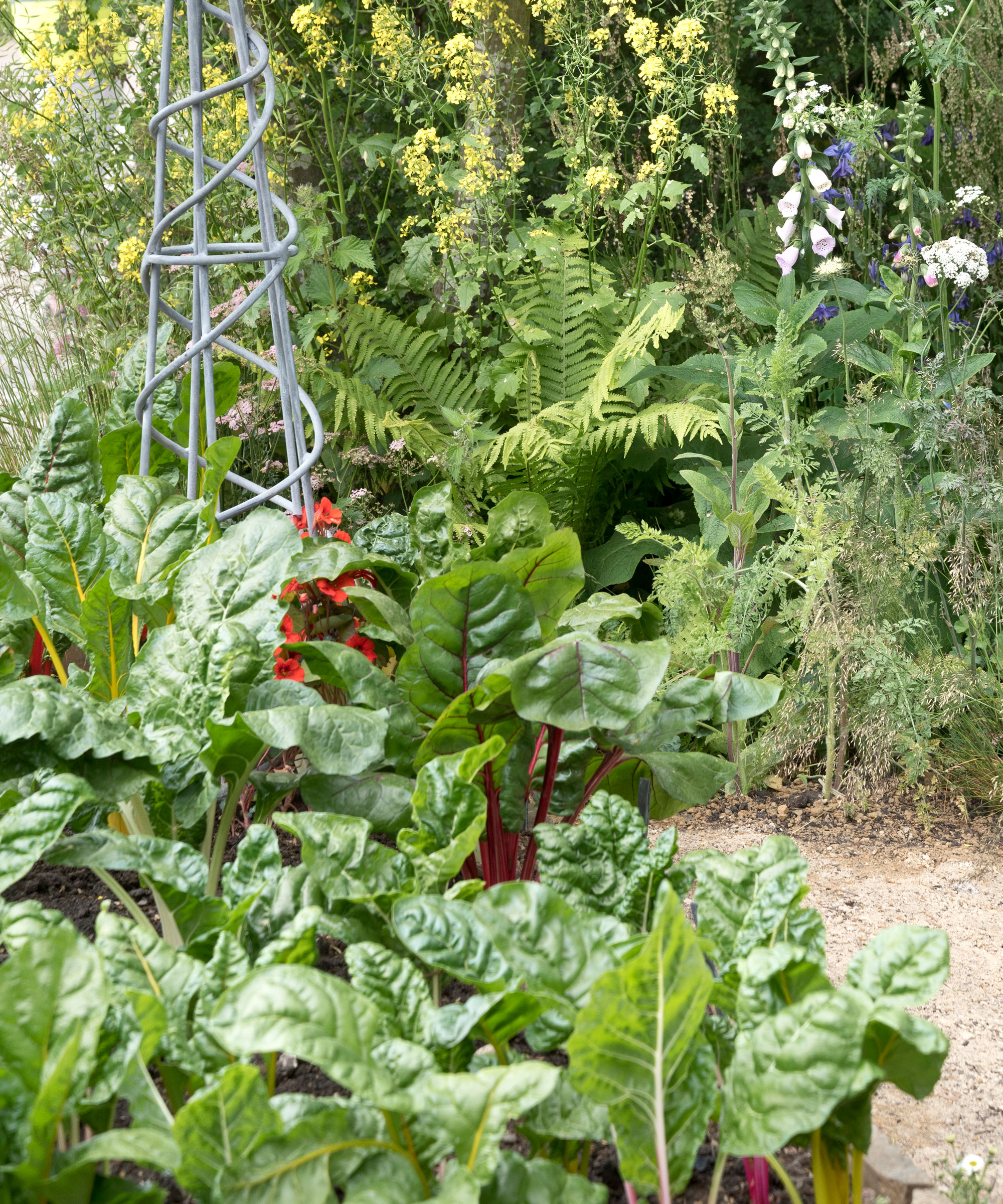
This is so easy to achieve. Pick plants that will flop over paths, tumble from arbors and pergolas, and scramble over walls and fences. This softens the hard landscaping so it fades into the background rather than being the dominant force as is often the case with more contemporary gardens.
It’s time to let nature take its course too. Put away those secateurs and let your plants go on a rampage. Get a hazy effect with lady’s mantle, Alchemilla mollis, used to edge the path here). You can also plant low-growing native plants, such as bearberry shrubs or lingonberry shrubs, which will cover bear soil and blur the edge of your pathways.
The soft lacy flowers form scalloped edging. And you can’t beat airy cow parsley to blend in hard boundaries. It’s like looking through a filtered lens to enhance things.
14. Fill your cottage garden with containers
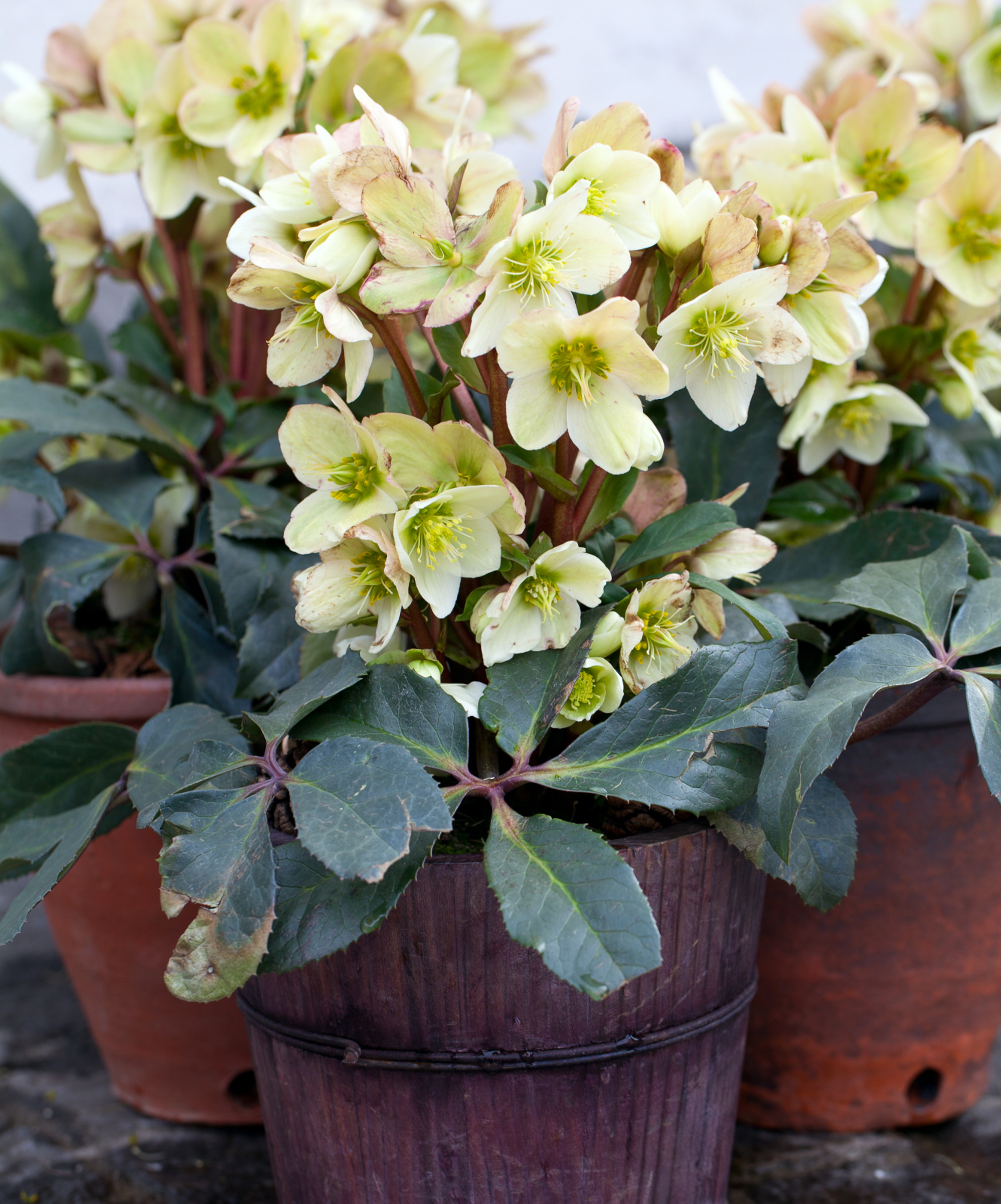
Container garden ideas provide the perfect way to punctate hard landscaping in your cottage ideas. They also offer a wealth of other benefits too.
You can also plant earlier, as when the soil is too cold to grow in early spring, containers filled with snowdrops, anemones, or bergenias can absorb the warmth of the sun from their higher ground. You can also use your containers to reflect the changes in the seasons, for example, there are plenty of fall planter ideas that will help bridge the gap between high summer and your winter garden ideas.
If your garden is small or largely paved over, containers also work wonders to add cottage garden color and interest to your cottage patio ideas.
15. Bring in the bees
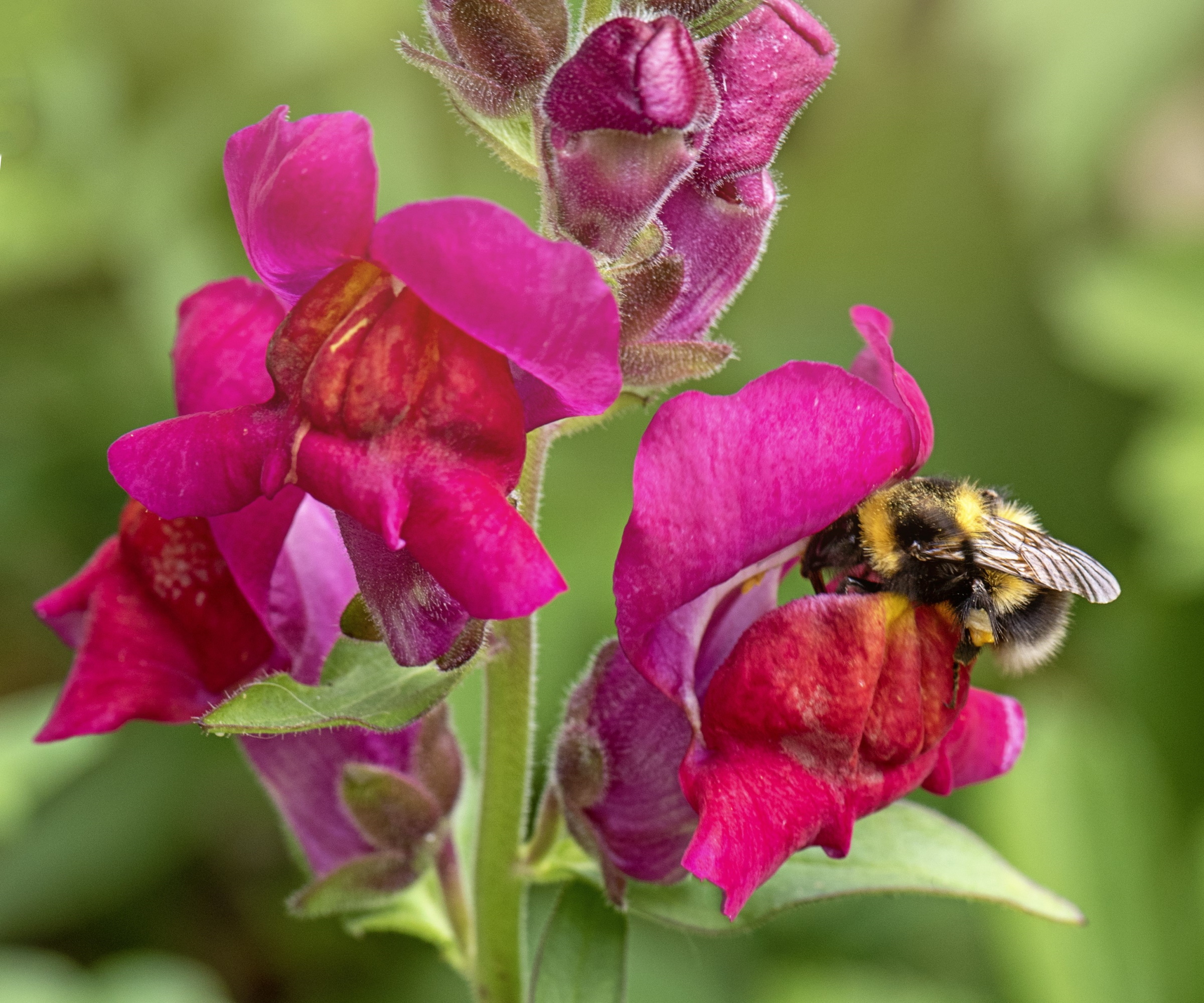
There are plenty of plants for pollinators but not all of these are flowers that attract bees. Ana Mari Bull avoids plants that are wind-pollinated as they don’t need the help of insects. She advises that double flowers, though attractive in a cottage border, should be avoided as bees can’t get into the plants and many are sterile.
For summer Ana likes geranium ‘Rozanne’ for small gardens and lavender for low hedging to edge a path. But late winter and early spring supplies of pollen are important.
She says: ‘Hellebores, cyclamen, primroses, crocus, lamium, galanthus, eranthis and winter flowering clematis with be a food source for early emerging bumble bees, who can fly at lower temperatures than other bees.
‘Borage flowers refill their nectaries every couple of minutes so are perfect for bees and other pollinators. The flowers can be added to Pimms too.'
16. Introduce fragrant plants
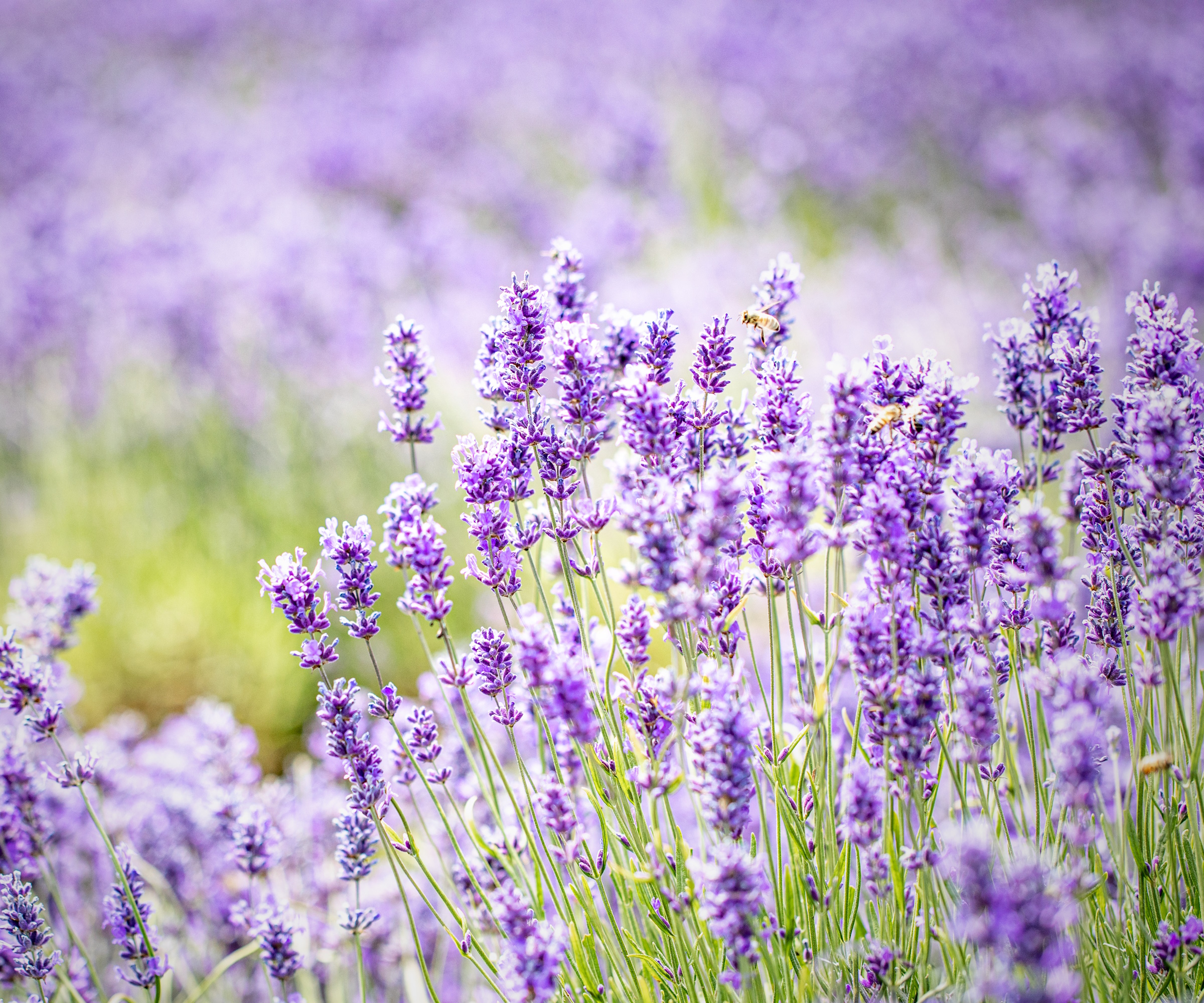
The scent of lavender and the soothing buzz of bees hovering around it on a summer’s day is a traditional but timeless feature of the cottage garden.
Plant lavender near a path or doorway so you can brush your fingers through the scented leaves as you pass by.
A heavenly fragranced rose scrambling over an arbor will envelop you as you wander underneath, while a twiggy wigwam of sweet peas will drench the air with their old-fashioned scent.
Other favorites for packing perfume into borders include frilly garden pinks and sweetly honeyed phlox, while a perfumed lilac bush always works well and is a butterfly magnet too.
Lavender plants are available from Walmart.
17. Give your cottage garden a modern twist
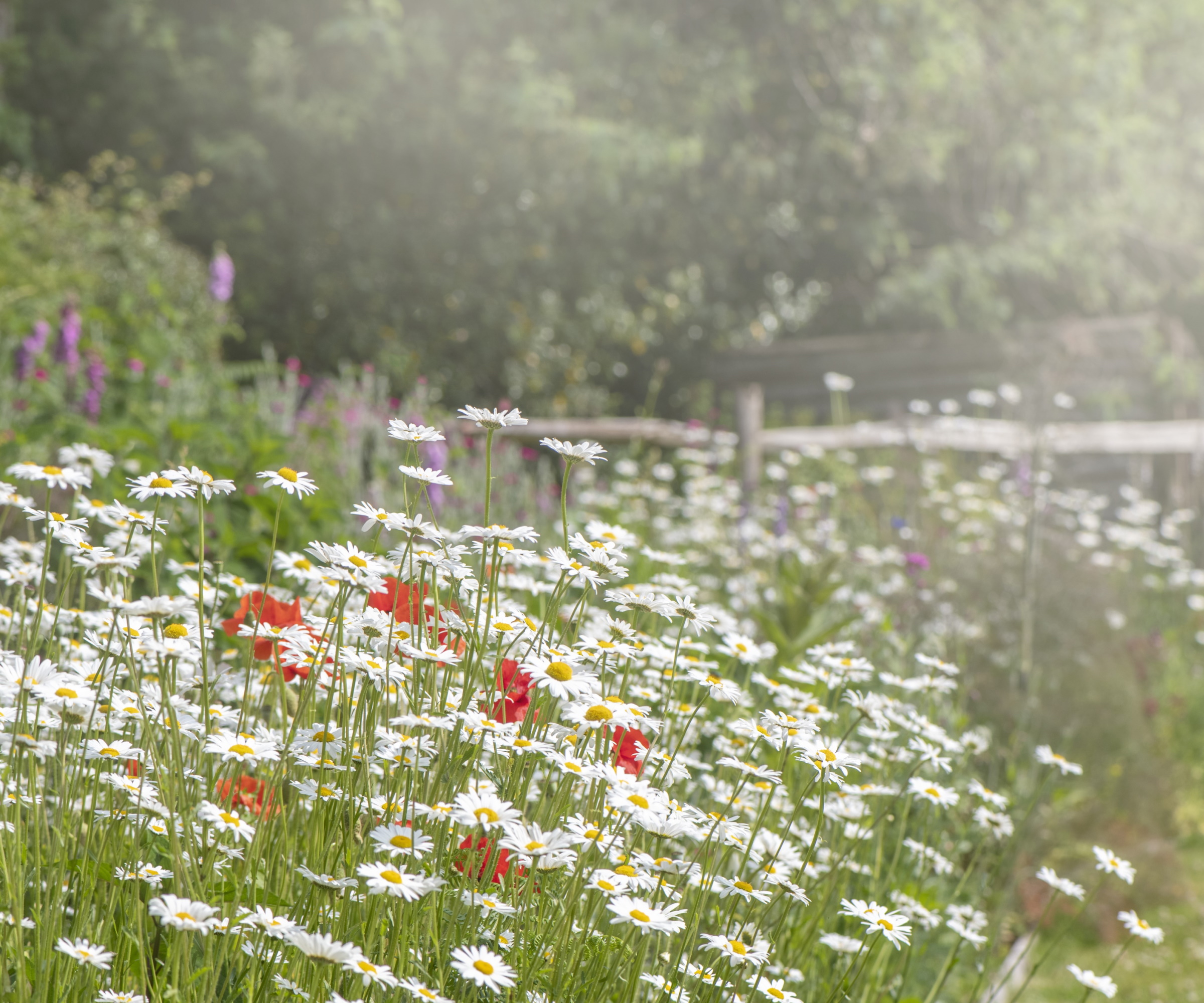
You can achieve a modern cottage garden look by combining modern materials and hardscaping styles with traditional planting selections. Think modern or geometric paving cutting through flamboyant borders that are loaded with roses, daisies and cornflowers.
'This is one of my favorite aesthetics to create,' says Cate Singleton, garden expert and Director of Design at Tilly. 'I love the juxtaposition of the informal cottage style with a more structured modern flare.'
Certain hardscaping elements can help to modernize this look. For example, instead of winding gravel pathways, instead consider linear or straight paved areas or paths with sharp, neat finishes that can help to create a modern aesthetic.
Clay brick pavers are a functional material for any garden project that should be a consideration for those asking how to create a modern cottage garden. These pavers are useful in the backyard or front yard paving ideas, evocative of arts and crafts garden design elements from the 20th century.
Combining and clashing textures, shapes and colors in planting beds is typical of traditional cottage garden design, but there are ways to modernize this.
Sharp topiary set amongst cottage garden planting can help to add a contemporary feel, and many landscape and garden designers regularly combine soft perennial planting with clean and crisp hedging or topiary domes.
'Provide an evergreen structure that highlights the architecture of the house,' says Cate. 'Think upright shrubs or ornamental trees as focal points. Clean lines of evergreen hedges can also help define the structure of the landscape beds,' she adds.
'Fill in the framework that has been created with layered plantings that include flowering shrubs, perennials, and ornamental grasses,' Cate says. 'You can push the envelope by creating complimentary color combinations and play with different textures while filling in the landscape beds.'

Cate is a garden expert and Director of Design for Tilly. Tilly is a landscape design company that serves homeowners nationwide. Homeowners are matched with a professional designer to create a custom plan for their yard based on their geography, goals and needs.
18. Pick large roses
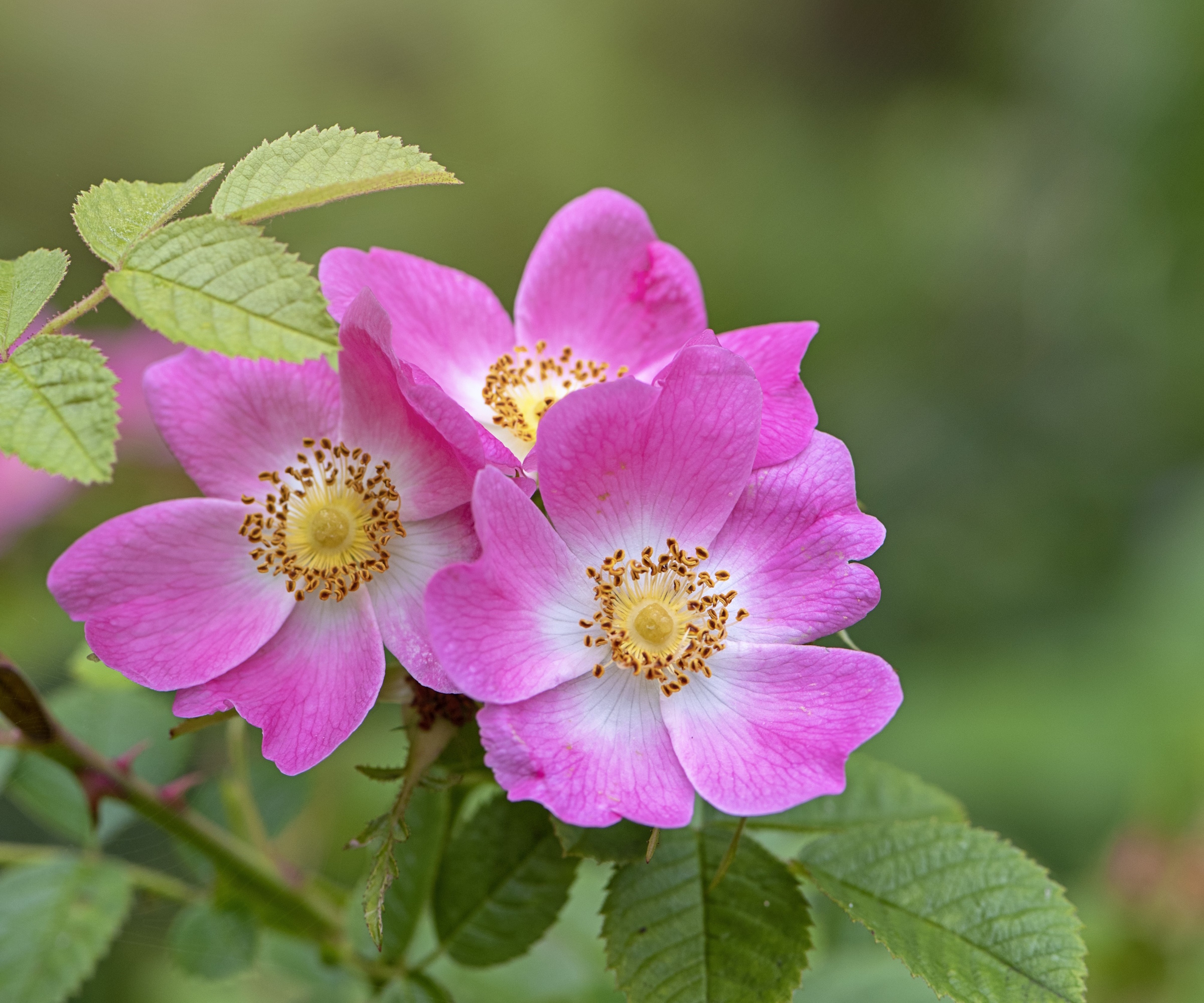
With their big, blowsy blooms and glorious scent, old-fashioned roses add a dusting of magic to the cottage garden. Available in a range of opulent colors, their silky ruffled petals pack an old-style glamour punch. They are the ideal flowers for creating a sense of romance in your cottage garden too.
Opt for something like this ‘Enchantress’, a stunning double pink ruffled rose with densely packed velvety petals that get a top rating scent-wise and is also what’s known as a ‘repeat flowerer’.
Remember to keep snipping off any faded blooms and you'll be rewarded with a second flush. It has a good vase life too, and looks gorgeous paired with lilac.
19. Add a secluded spot to sit
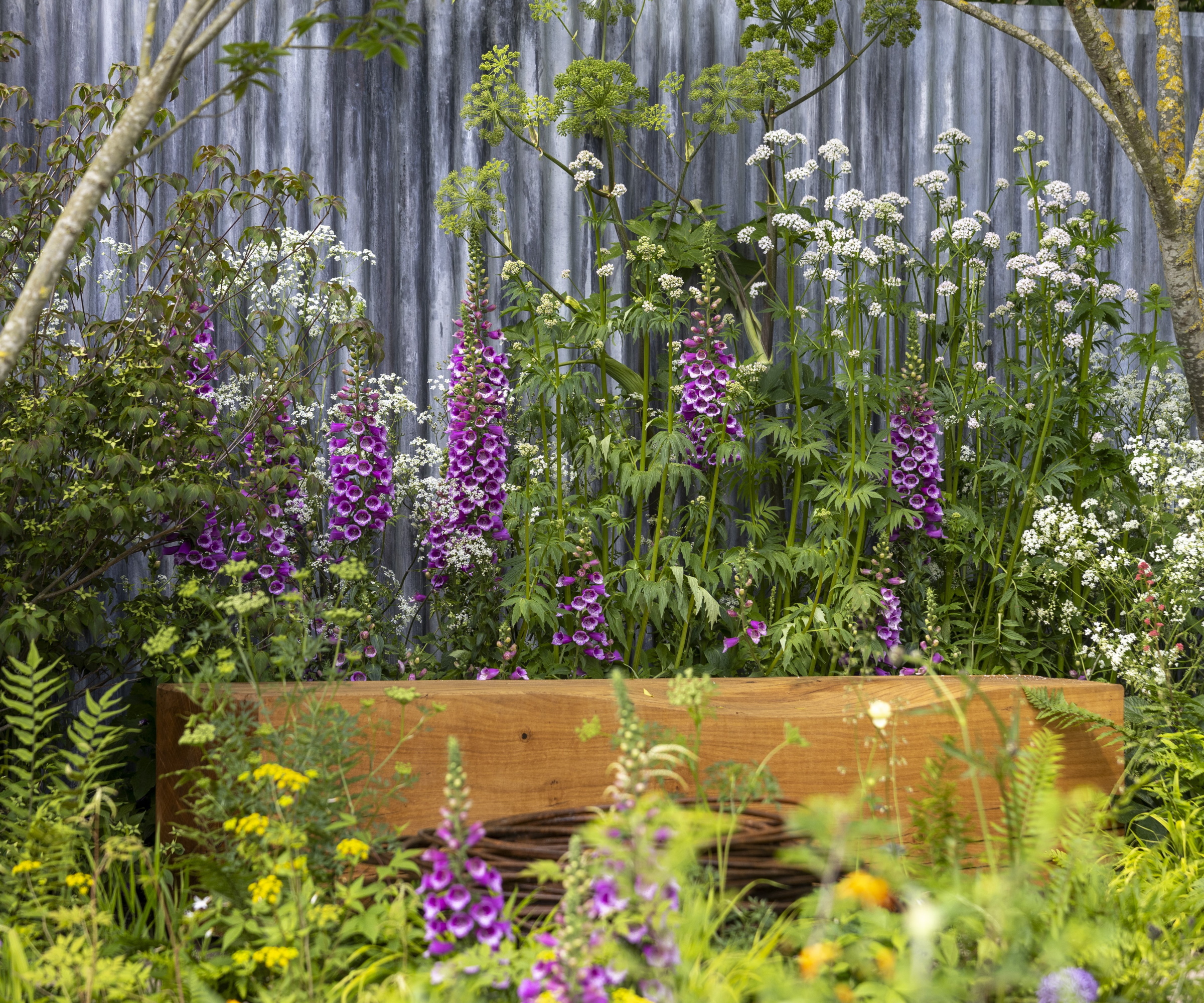
Don’t forget to plan seating areas in your cottage garden. Positioning a bench in a secluded spot – beneath a tree with low branches, or an arch covered with roses or wisteria – will immerse you in the sights and scents of your garden, and enable you to take in the view.
Think carefully about where you place your seating, so that you can get the best vista to appreciate all your hard work. Choose a spot that isn’t overlooked by neighbors and offers some shade from the glare of high summer sun.
20. Plant around a focal point
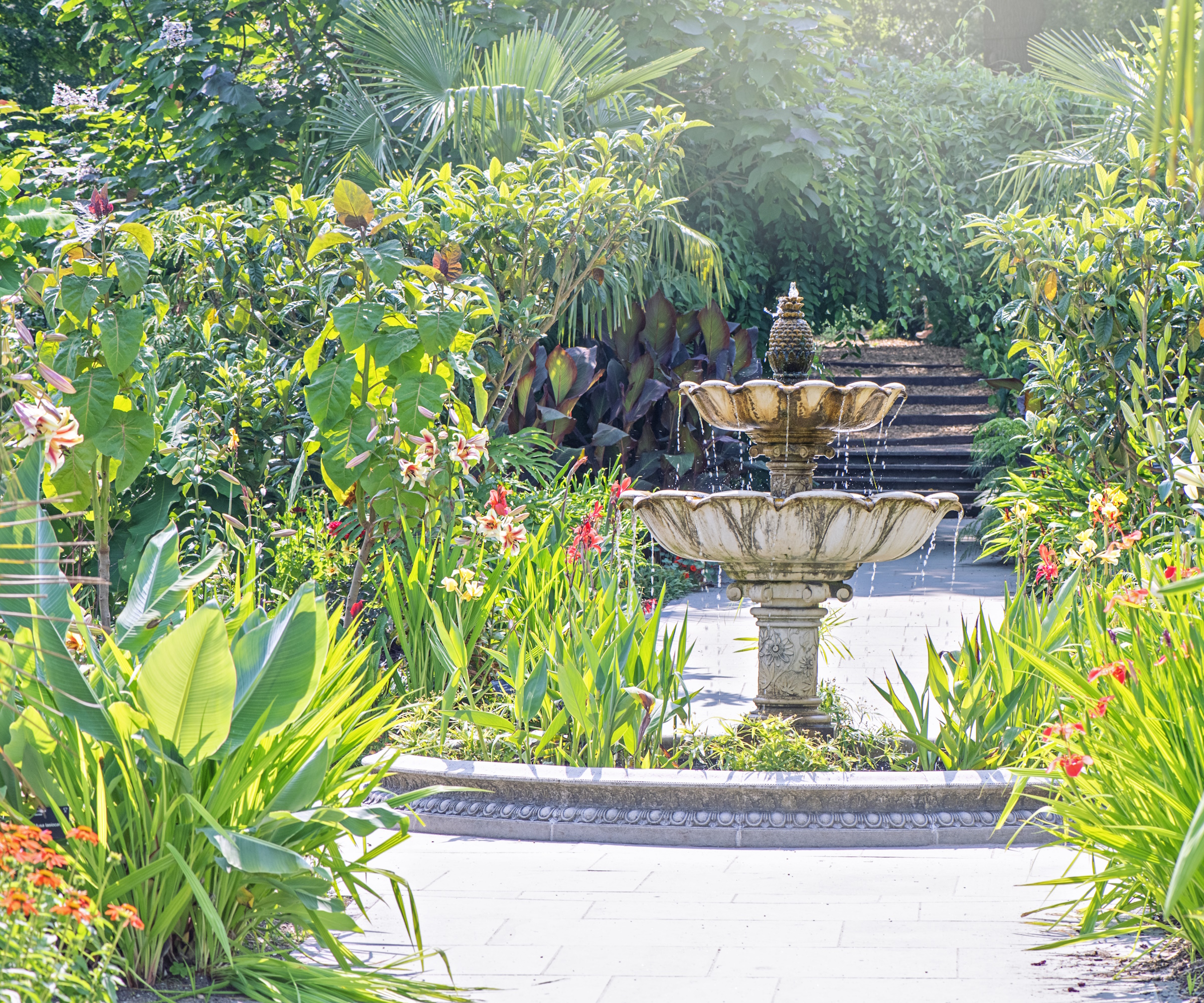
Adding a few key focal points or yard art ideas to your cottage garden is important to help draw the eye, and create a gentle sense of purpose and structure, without overlapping into formality.
A bird bath surrounded by borders, a trickling water feature, a colorful container display, or a romantic rose arch – all these cottage garden ideas will help you to appreciate the wider scheme you have created.
21. Make a vintage display
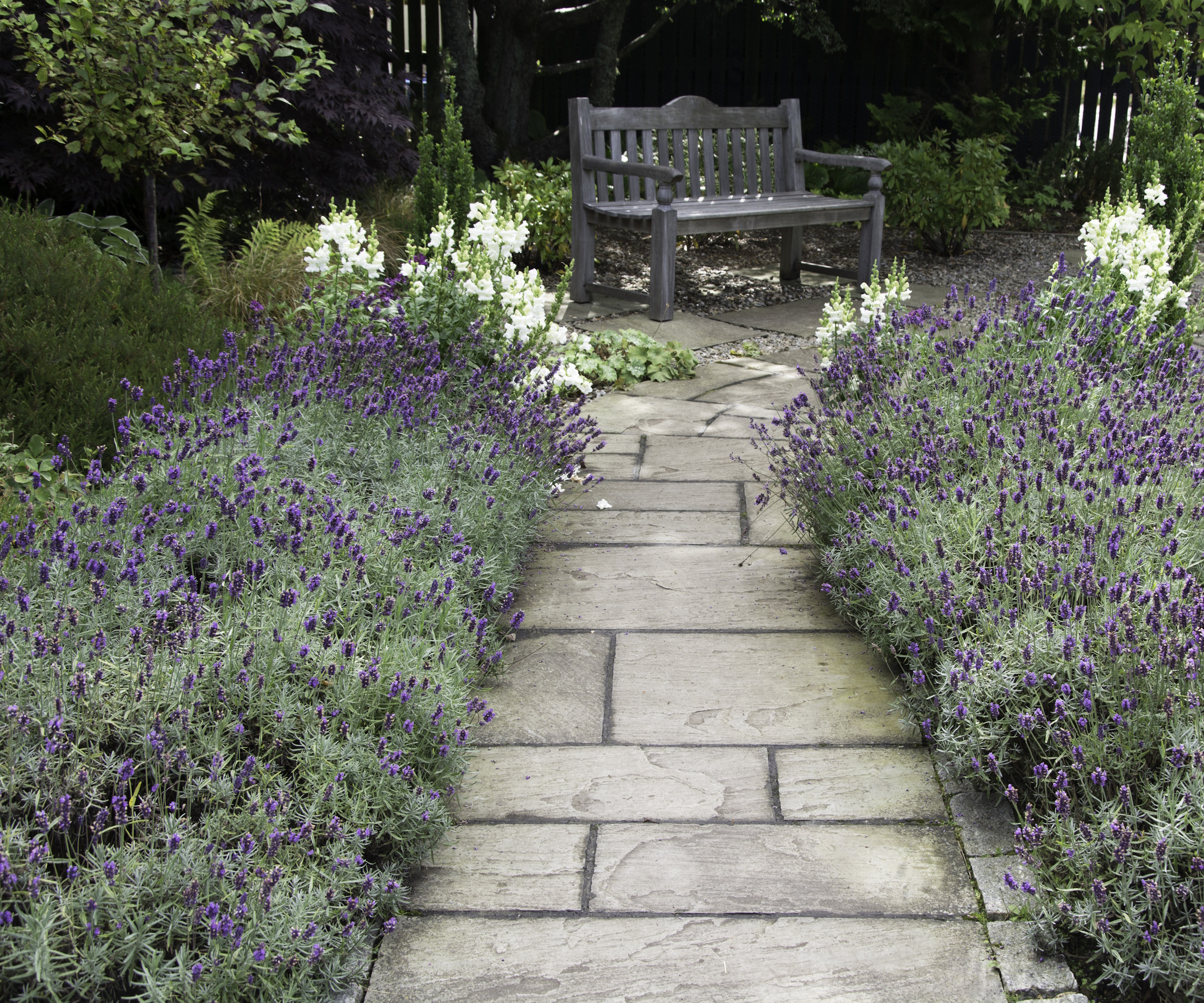
Vintage pieces add rustic charm and a sense of history to a cottage garden. Consider how fleamarket finds can be repurposed as planters, and use them together to make a striking display. Timeworn metallic containers work particularly well as a foil for bright spring flowers.
Also keep an eye out for whimsical signs, outdoor furniture and cast iron items that could be used to display plants.
22. Get the picket fence look
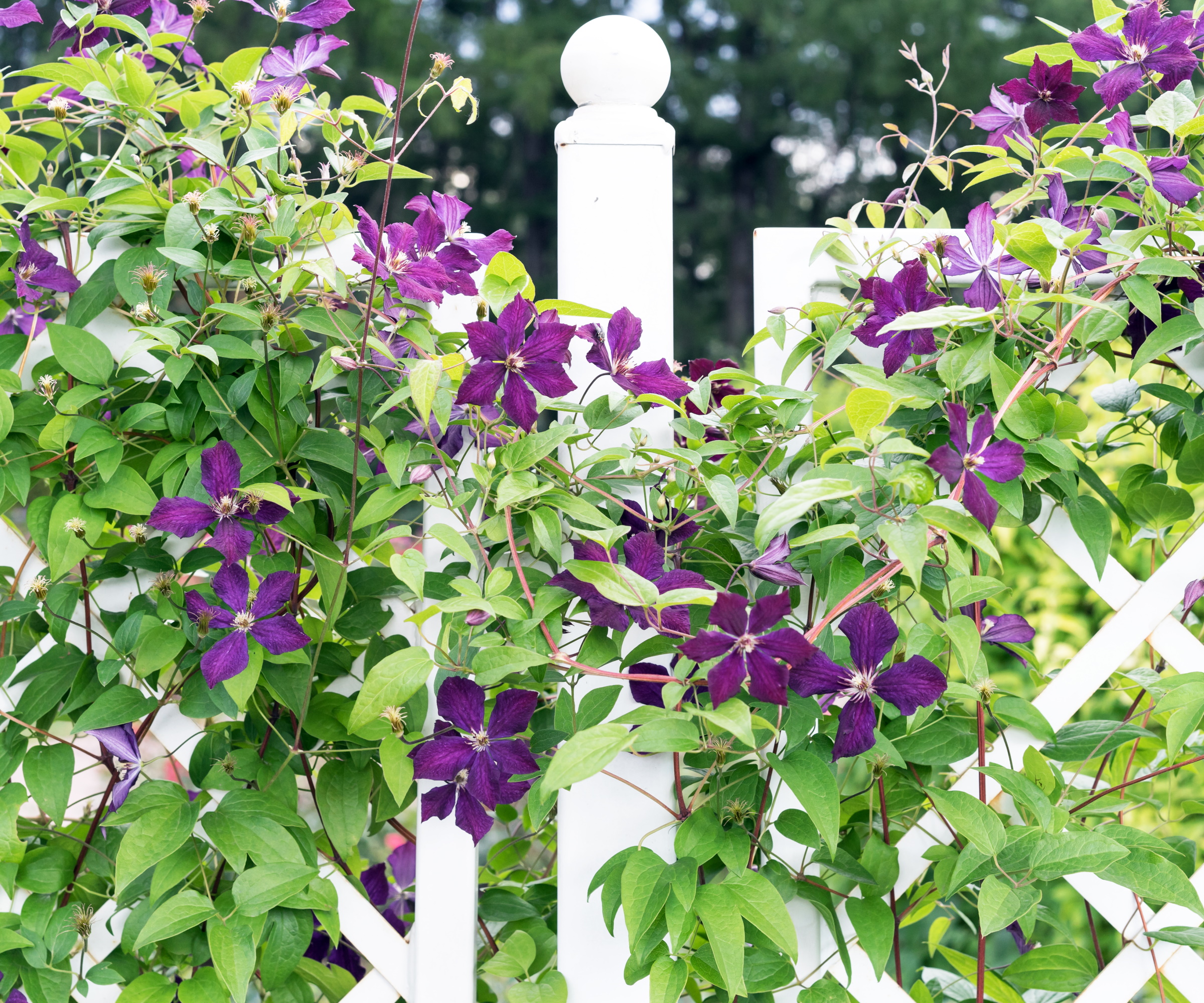
Traditional white picket fences are the signature look for a cottage garden. Also known as palisade fencing, back in the day they were the obvious choice as they were simple to construct on site with standard pieces of timber.
The fence was often painted white to improve longevity and it’s this iconic look that we've grown to love. Now there are new long-lasting products on the market to achieve the same look with modern materials that don’t require upkeep. Once they're in position all you need to do is plant a mass of blooms that will peek over and through the panels.
23. Make doorways pretty
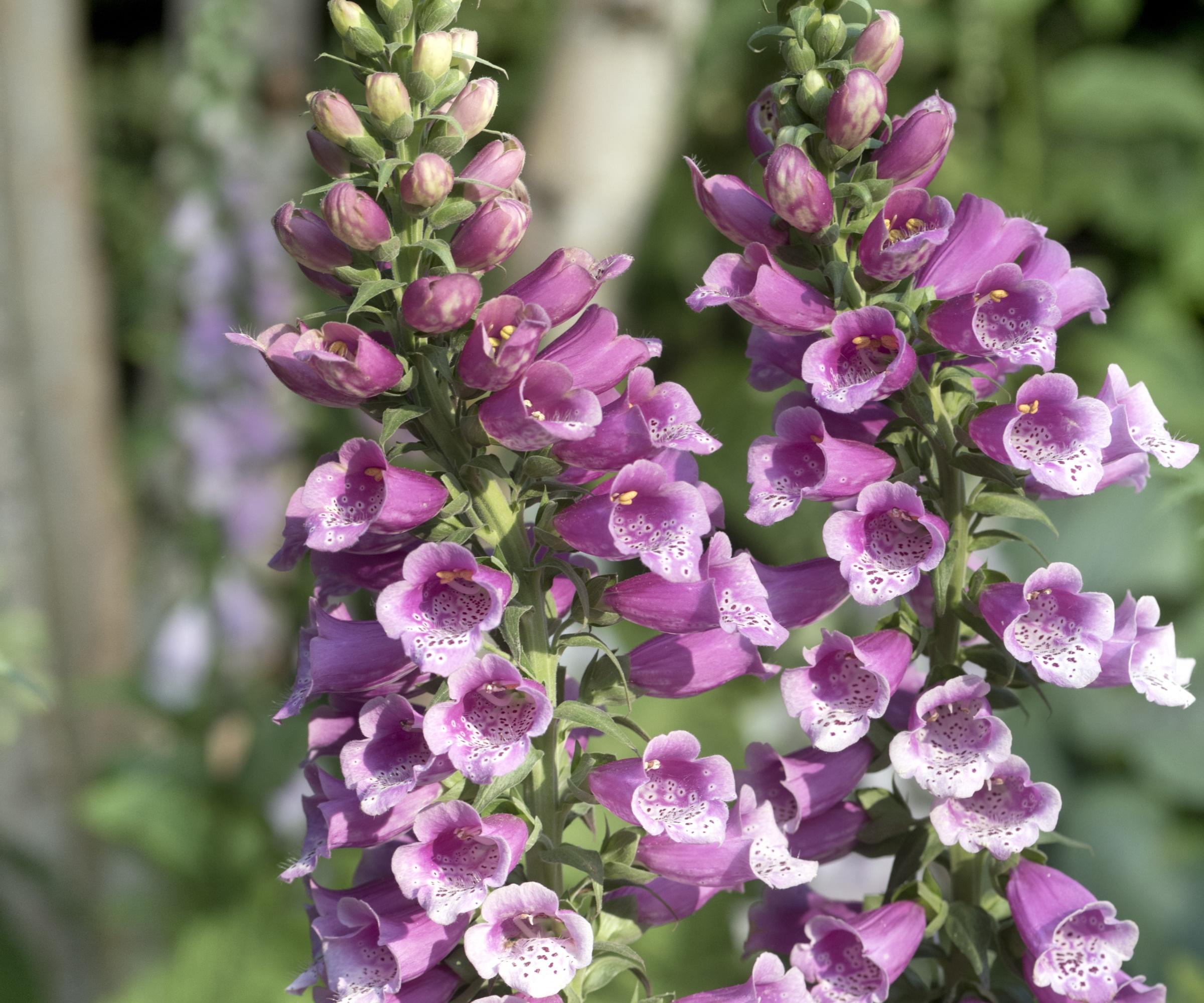
Set the scene by framing doors and windows, both front and back, with pretty collections of flowers and foliage in a restrained color palette that fits with the exterior scheme of your house.
Add perfumed plants to the mix too. As you walk up your path one of the most welcoming sensations on arriving home is being hit by a delicious waft of fragrance so a pair of planters (we love these terracotta chimney pots – what could be more cottage garden?) with lavender will give your entrance the standout factor.
Combining with inviting cottage porch ideas helps to create the right mood and lets you show off your passion for plants too. Tap into cottage vernacular by choosing classics like lupins and perennial cornflowers, then let them romp around in a naturalistic way.
24. Escape to nature with dreamy lilac
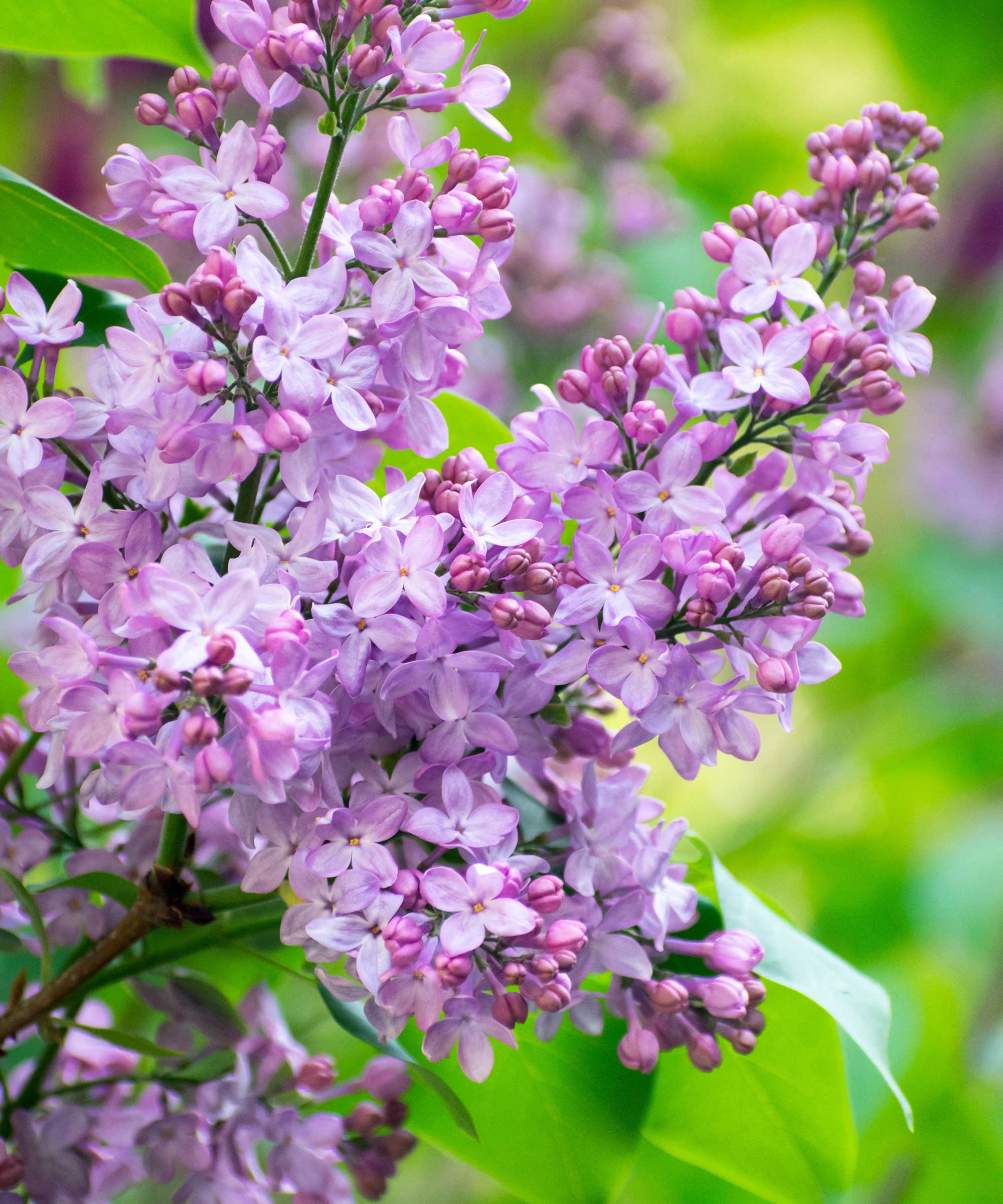
The most magical of plants, lilac is one of the cottage garden shrubs of old that’s rightly having a comeback. A longtime favorite of cottage planting schemes, where it was once considered the height of fashion, it grows easily and the showy cones of blossom come in a range of pretty shades as well as signature soft mauve.
Some of the oldest varieties are known as French Lilacs. The lush double flowers of ‘Mme Lemoine’ are pure white and the heady perfume is incomparable so it easily earns its place in the cottage garden.
Lilac can be grown as a tree, a shrub, or in a pot according to variety, and adds a pleasing shape to the structure of your planting.
25. Plant in romantic drifts
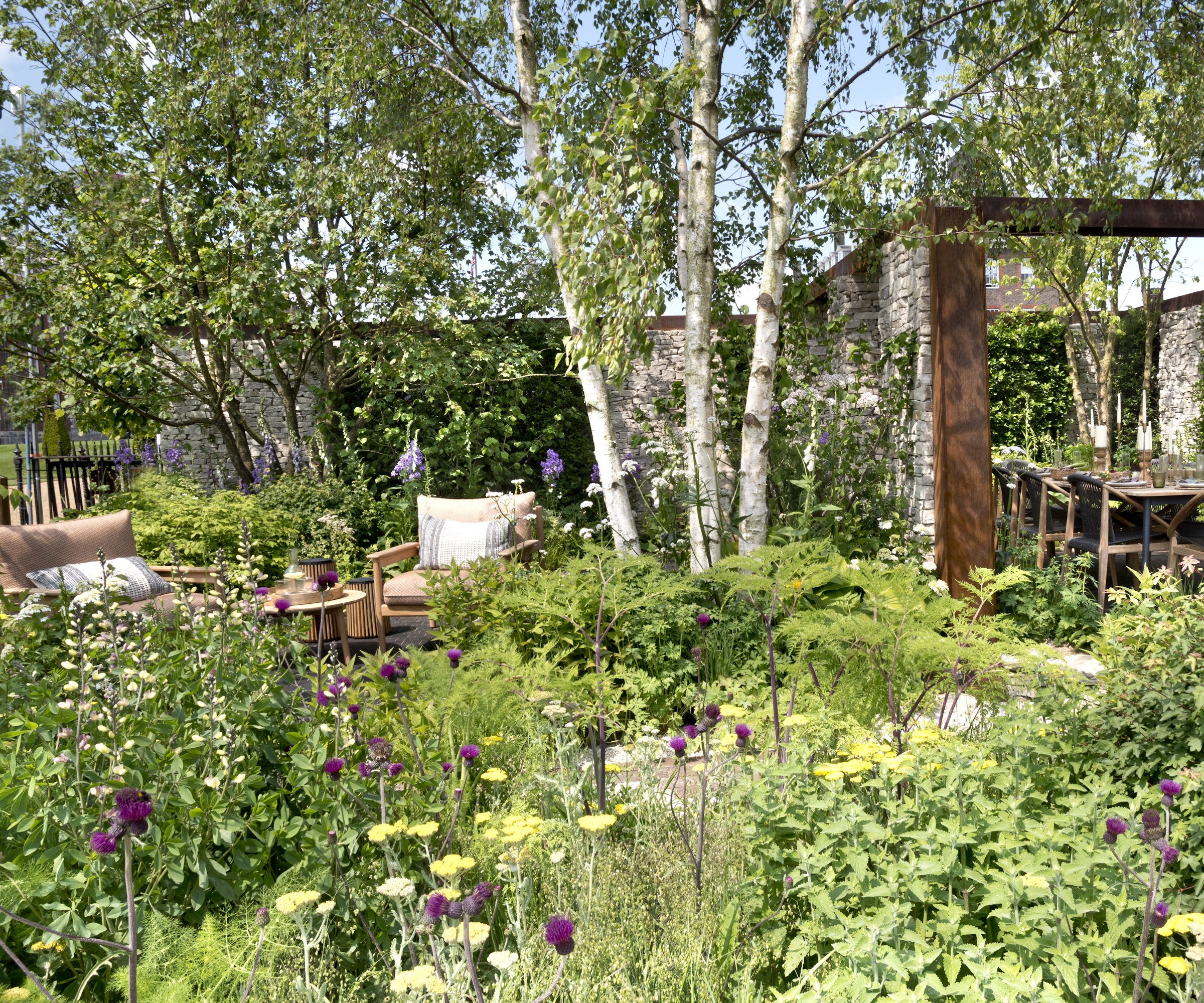
This is a signature look for cottage gardens, where swathes of naturalistic planting are used to create a loose and unstructured effect. It’s easy to do too. Just remember you’ll need three, five or seven lots of each plant, then arrange them in repeat groups for impact.
One of the most distinctive cottage garden plants with their tall spires of speckled bells, foxgloves are a natural choice for this look. Drift planting works best when it creates a gentle wash of color, so foxgloves are perfect for the job as they come in a range of dusky pink, soft apricot and misty mauve shades.
Add punctuation marks to the structure of the planting scheme with pompom plants like agapanthus or alliums, also planted in repeat patterns.
26. Add stunners to fill borders
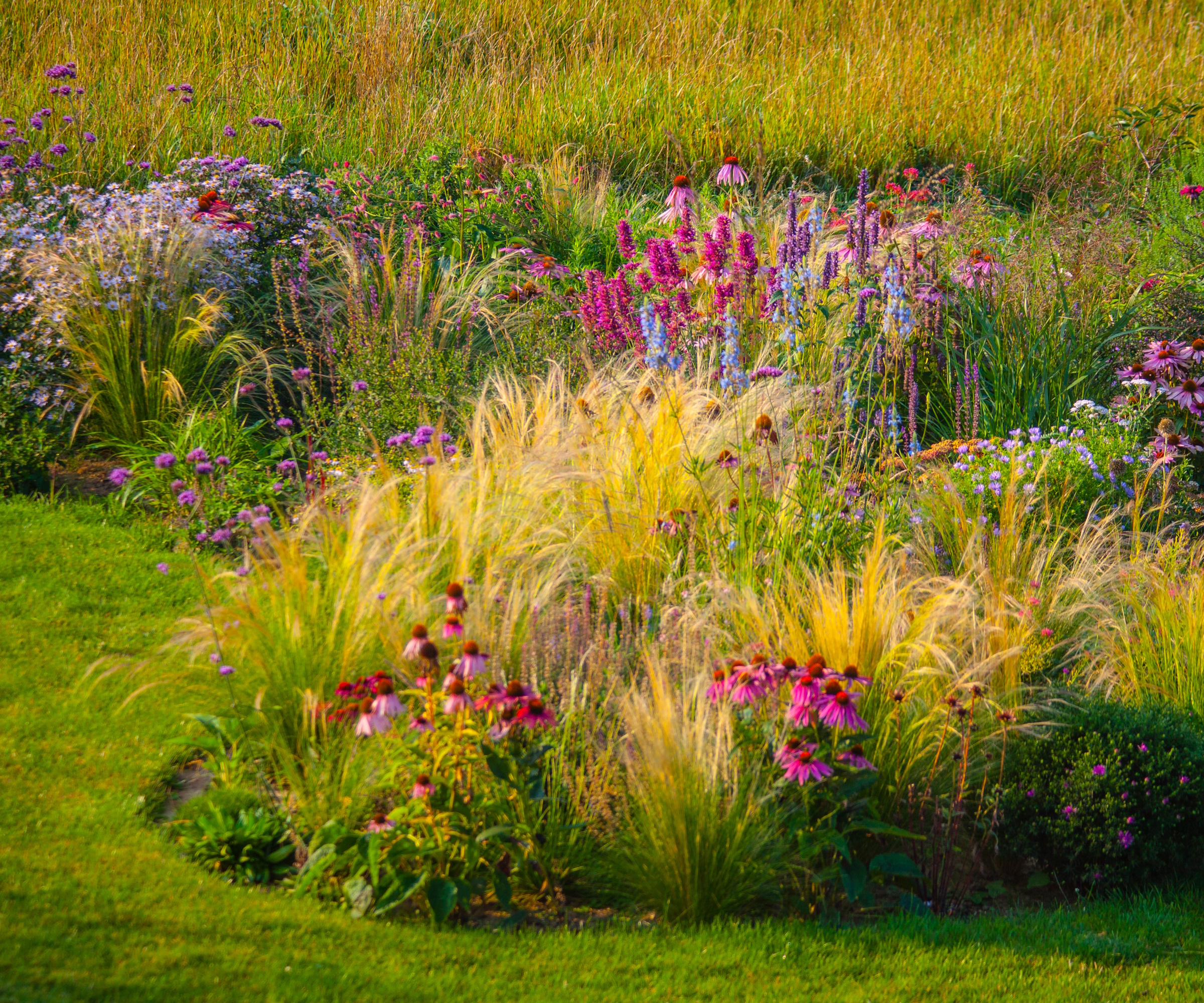
Choose dramatic spikes with striking vertical lines and big showy plants with larger-than-life leaves to add show-stopper moments to a cottage planting scheme. If you want drama in your borders opt for statement plants like these.
For attention-seeking towering spires go for showy lupins, verbenas and verbascums as they will always catch the eye. A few vertical notes from plants like this will lift a run-of-the-mill border and turn it into something special.
The huge, silvery, thistle-like leaves of towering cardoons make it a stunning addition to the back of a border. Just perfect for some leafy seclusion in your favorite relaxation spot.
27. Choose a cottage garden classic
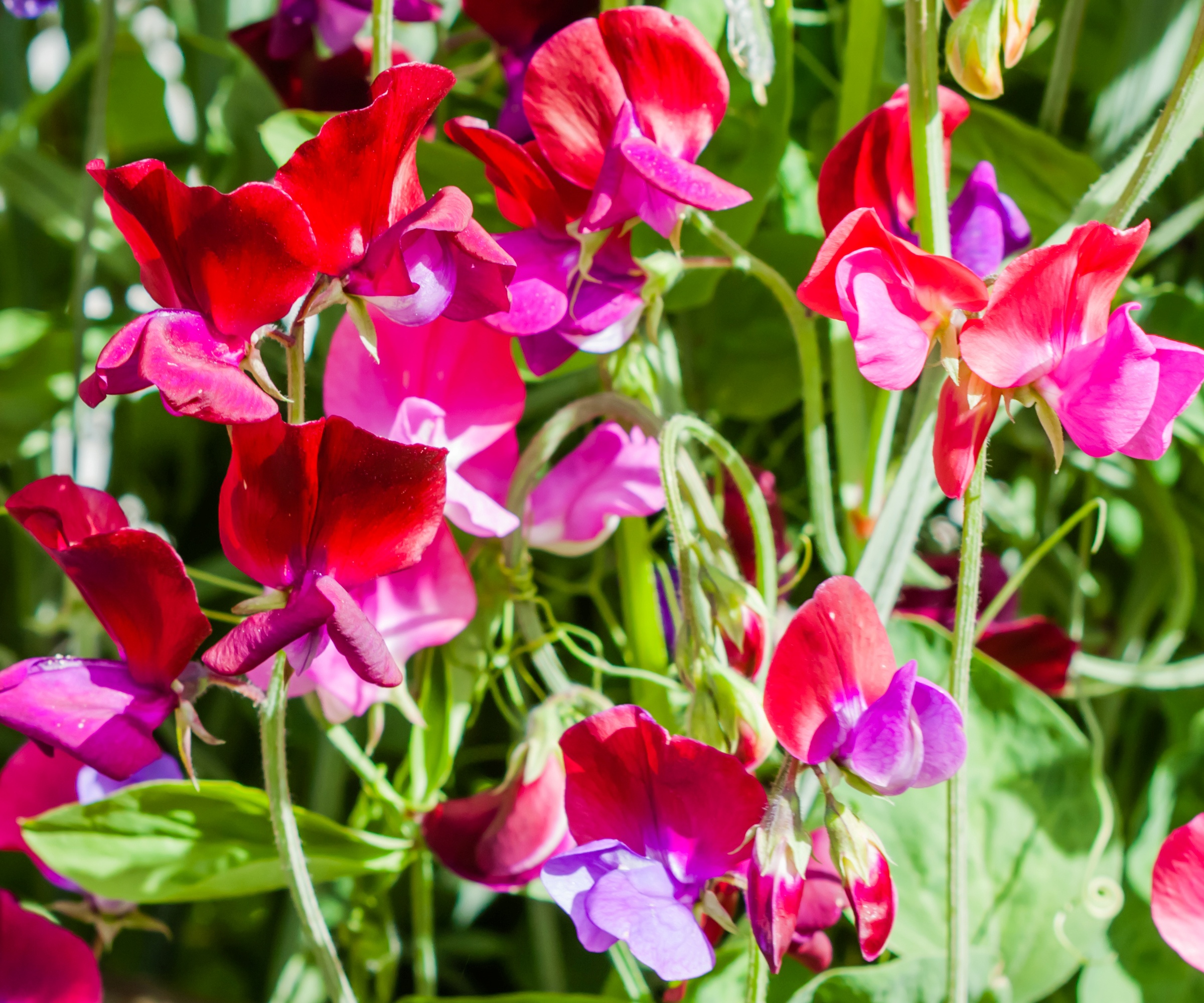
Adding fragrance, color and height, traditional sweetpeas would have to be your first option if you could only choose one plant. Once you know how to grow sweetpeas, they will quickly become an integral part of your cottage garden ideas.
Give them a wigwam of hazel branches to scramble up and over and sweet peas will be off, their tendrils winding through the twiggy frame to create a sensational summer display.
'Three Times As Sweet' is new – and the first cultivated modern grandiflora variety, with a ton of that lush, rich and evocative scent that's the signature of these cottage garden classics. Sweet pea seeds are available from Walmart.
The tri-color blooms of this variety blend lavender-blue, purple and white to create an eye-catching display that's just the perfect finishing touch to a cottage garden.
28. Choose the right hard landscaping
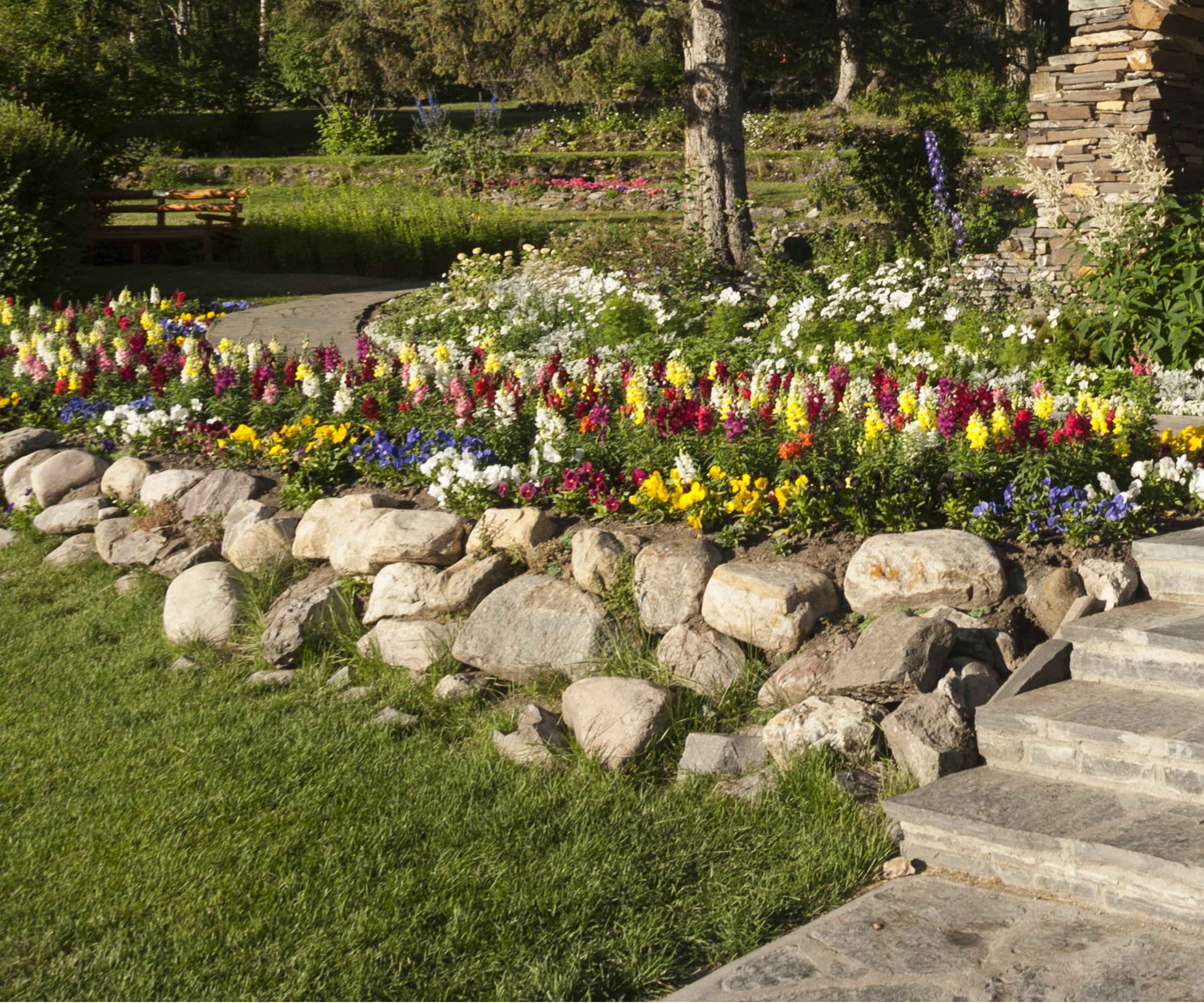
When you are considering backyard landscaping ideas, think: local.
Locally sourced, natural materials and building techniques ground a garden in its place and would have been what was used in the past. Nearby salvage yards and local stone suppliers would be a good starting point for paving materials and searching out local craftspeople for furniture and ornamental additions.
For terraces and pathways reclaimed stone is ideal, along with brick, if this chimes in with the locality, and gravel (cinder would often have been used in the past).
29. Consider a cottage garden water feature
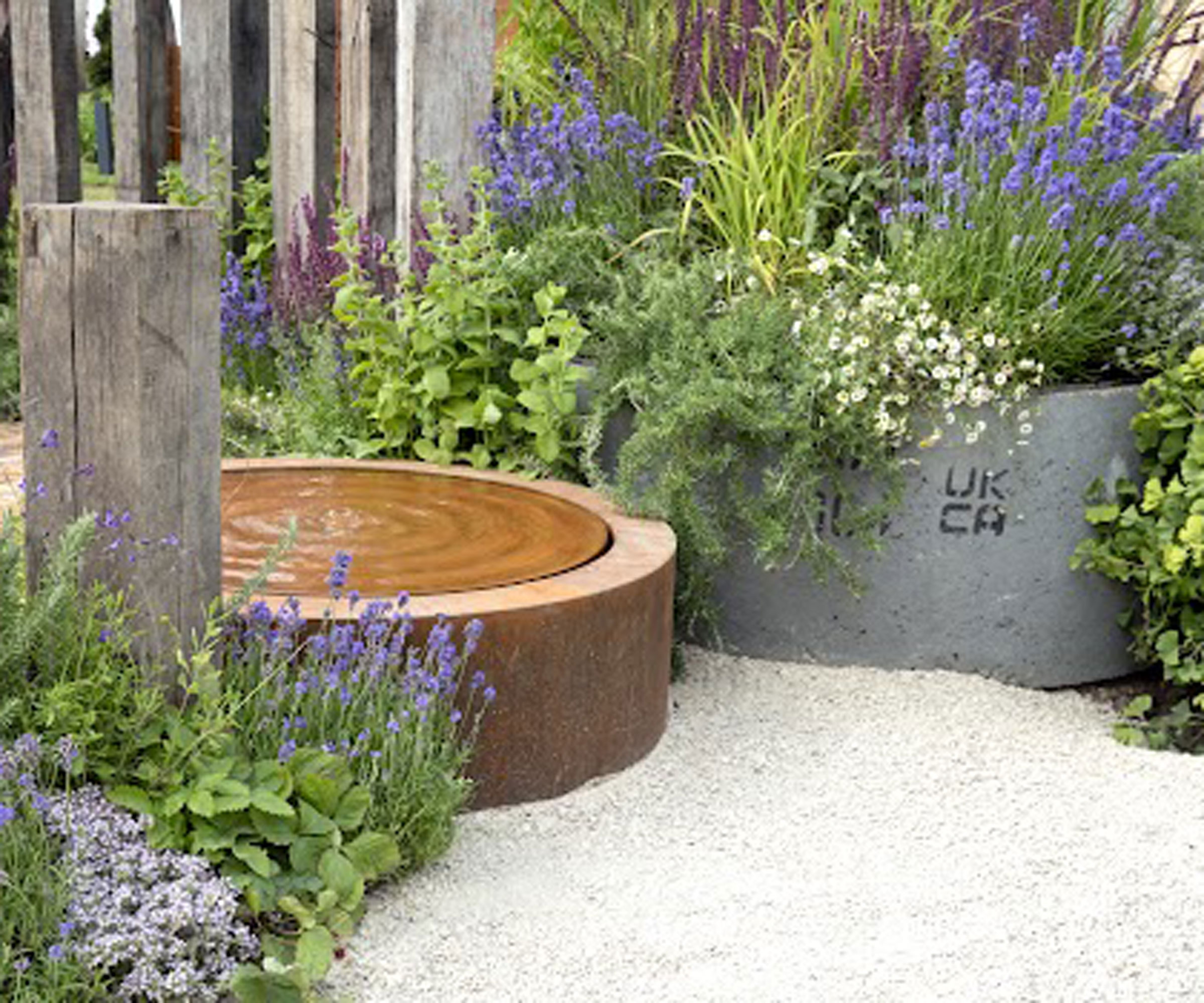
Cottage gardens should always include pond ideas. Water can help to create a harmonious and sensory space, which can really elevate cottage gardens.
'Water should be used to animate the space,' says Rachel Bull. 'A salvaged stone trough with a hand pump for instance wouldn’t look out of place in a cottage garden. Think trickling water, pond plants, even the croak of a frog!
'If a pond were to be considered in the overall layout it would be appropriate if it were designed to encourage wildlife and so increase the biodiversity of the garden. Consider adding a wildlife ramp or be sure to allow for access so that mammals and amphibians can get in and out of the pond.'
FAQs
I love cottage garden plants, but only have a small terrace - what should I grow?
If you only have a small space, go big with pots. Fill containers with flowering perennials and fragrant herbs, such as verbena, lavender and cone flowers. I would also suggest growing annuals to add diversity and difference to your planting schemes each year. Why not grow some sweet peas in pots trained over a small bamboo cane tripod?
Incorporating one, two or several of these ideas will help to create a cottage garden feel in any yard, whatever the size. Just remember, with cottage gardens, more is more, so do not hold back on planting.
While you might be keen to create a traditional, cottage garden look, consider also how to create a modern cottage garden, incorporating some of the themes listed here with sharp lines and straight edging, to bring the romance of the cottage garden into a contemporary space.
Sign up to the Homes & Gardens newsletter
Design expertise in your inbox – from inspiring decorating ideas and beautiful celebrity homes to practical gardening advice and shopping round-ups.
Lifestyle journalist Sarah Wilson writes about flowers, plants, garden design and gardening trends for Homes & Gardens. She has studied introductory garden and landscape design and floristry, and also has an RHS Level 2 qualification in the Principles of Plant Growth and Development. She is a regular contributor to Homes & Gardens and Livingetc. She has also written for Real Homes, Modern Gardens and Country Homes & Interiors magazines.
- Melanie GriffithsSenior Editor of Gardening Know How
- Holly ReaneyContent Editor and Sub-editor
- Thomas RutterContent Editor
You must confirm your public display name before commenting
Please logout and then login again, you will then be prompted to enter your display name.
-
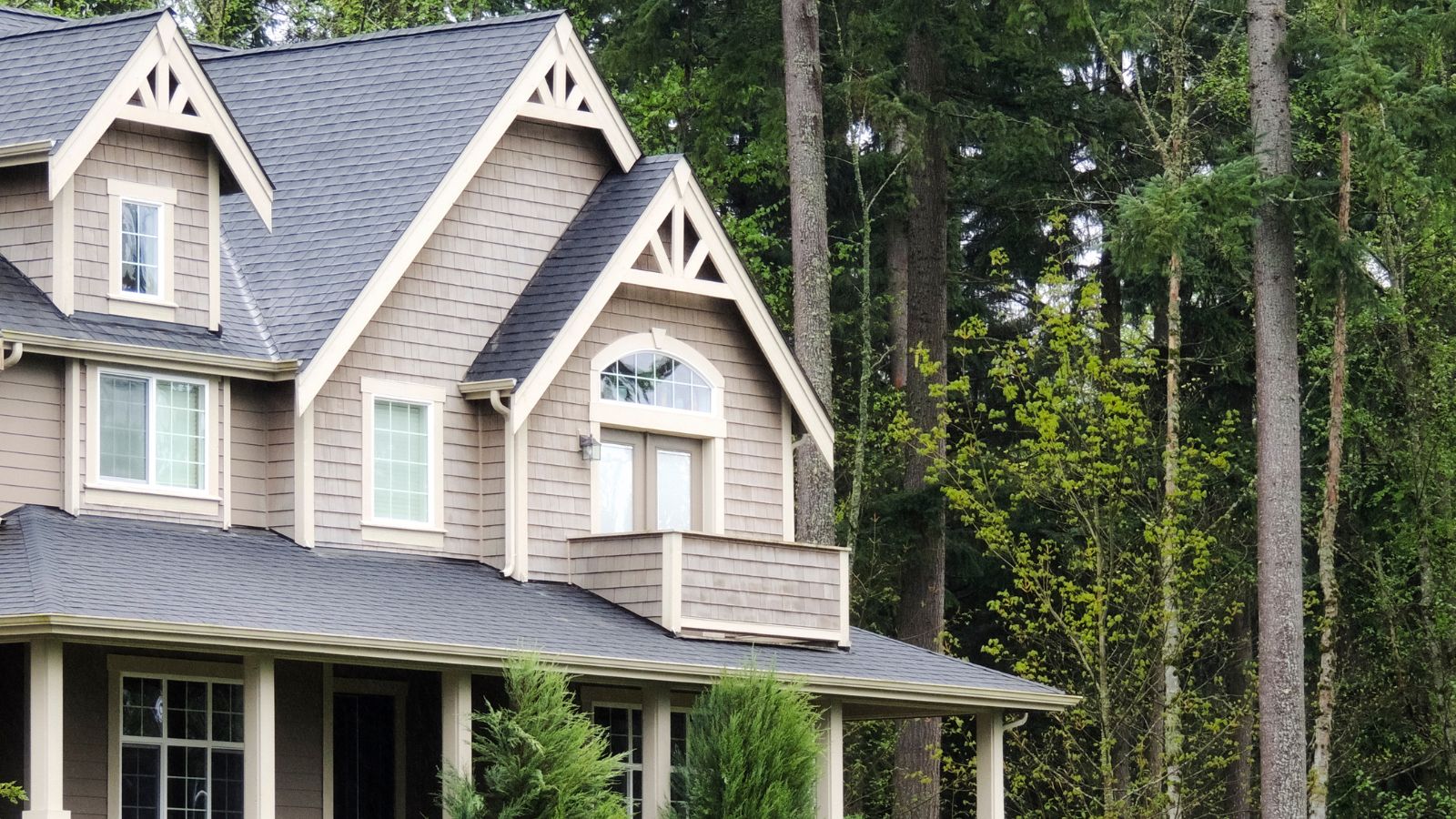 Can you paint a metal roof? Experts warn this could make or break your ‘worthy’ DIY efforts
Can you paint a metal roof? Experts warn this could make or break your ‘worthy’ DIY effortsDone right, it'll improve energy efficiency and avoid corrosion
-
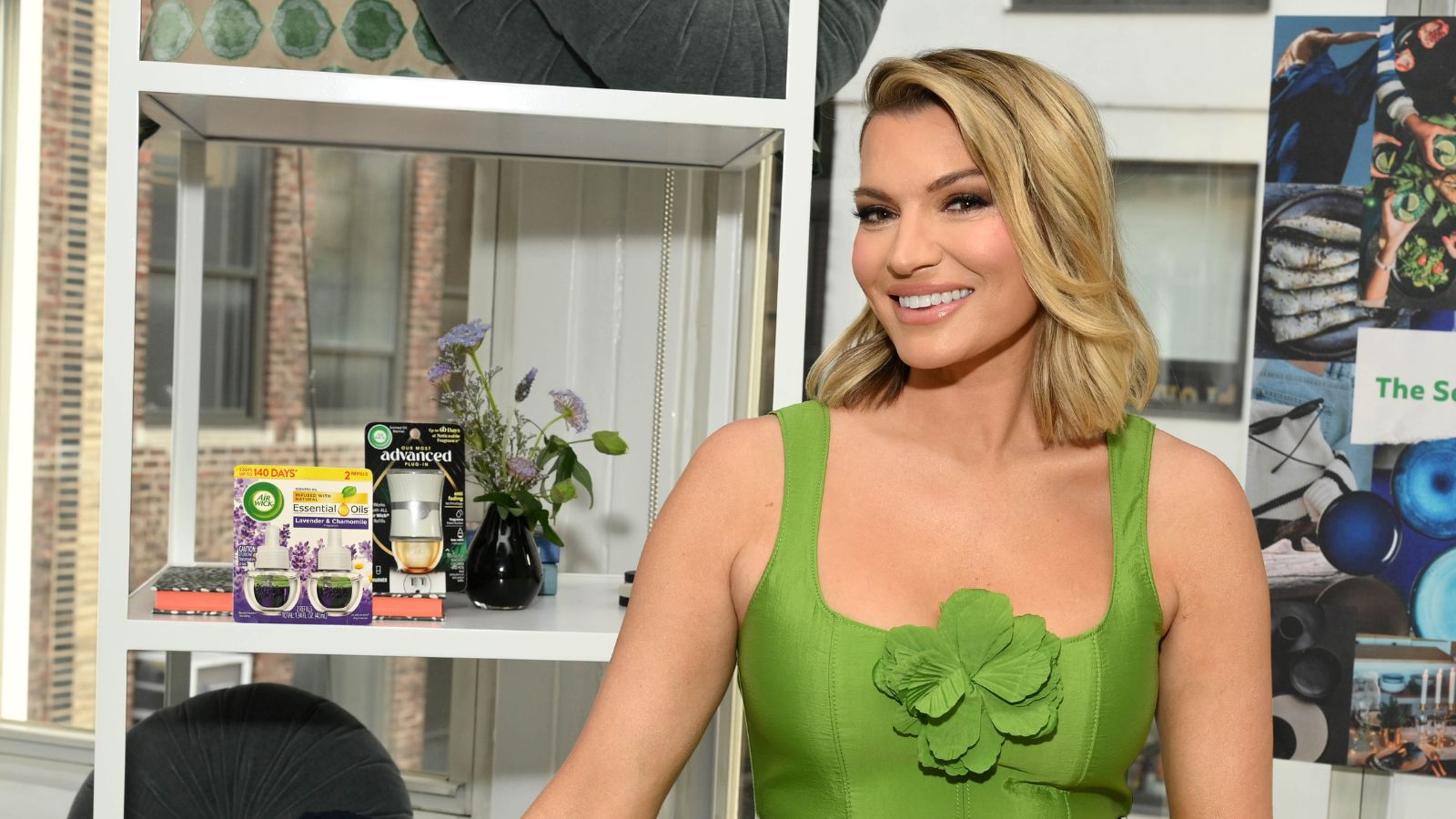 Summer House's Lindsay Hubbard has a scent-scaping tip that will impress your impromptu guests – it will change how you host in 2025
Summer House's Lindsay Hubbard has a scent-scaping tip that will impress your impromptu guests – it will change how you host in 2025The reality TV star and new mom has teamed up with AirWick, and has shared that she loves to use different scents in different areas of the home
-
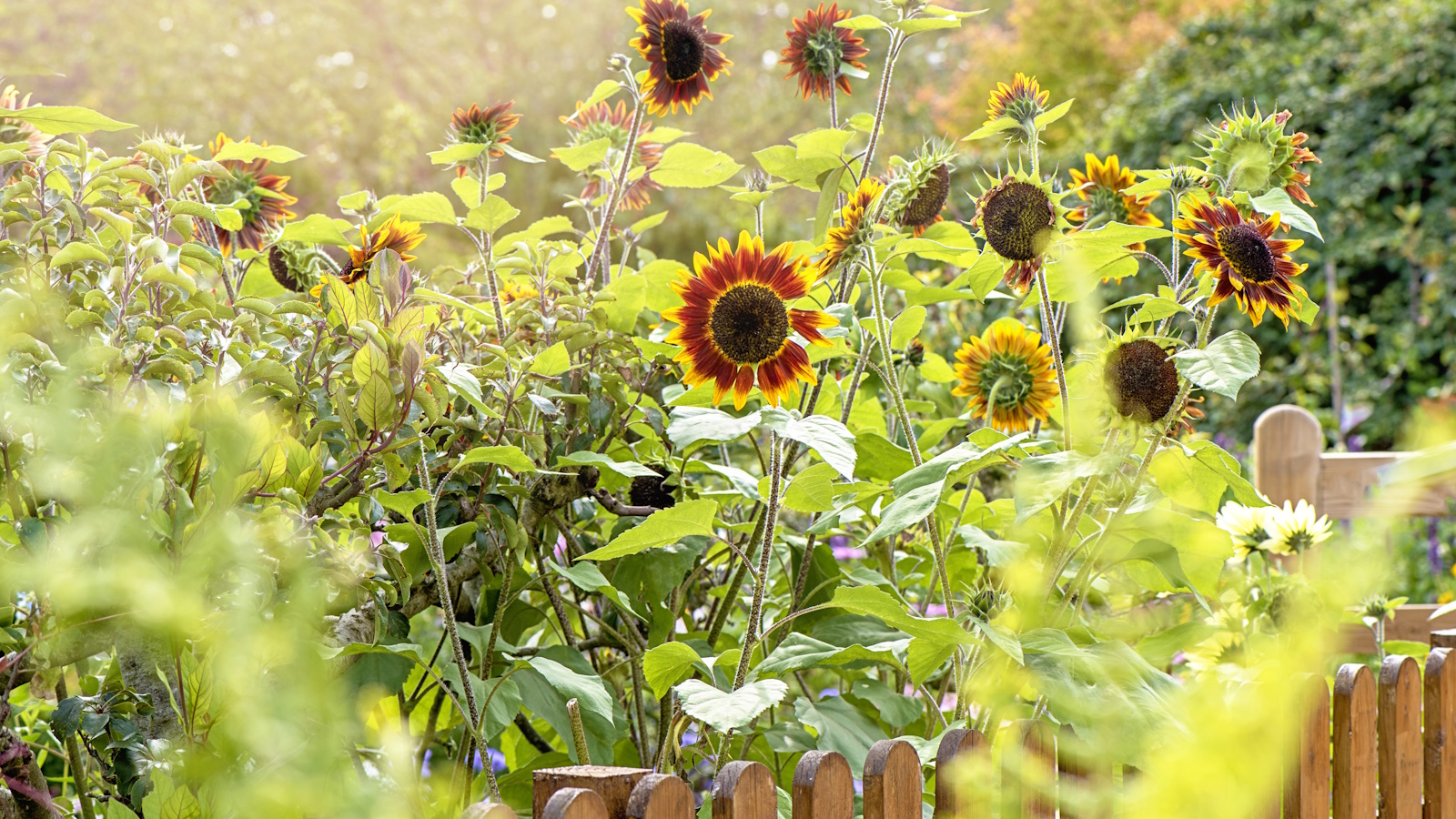 Best dwarf sunflowers for pots and small spaces – transform even tiny yards this summer with these bold, colorful blooms
Best dwarf sunflowers for pots and small spaces – transform even tiny yards this summer with these bold, colorful bloomsThese container-friendly dwarf sunflowers are sure to put on a summer show in your garden, whatever the size
-
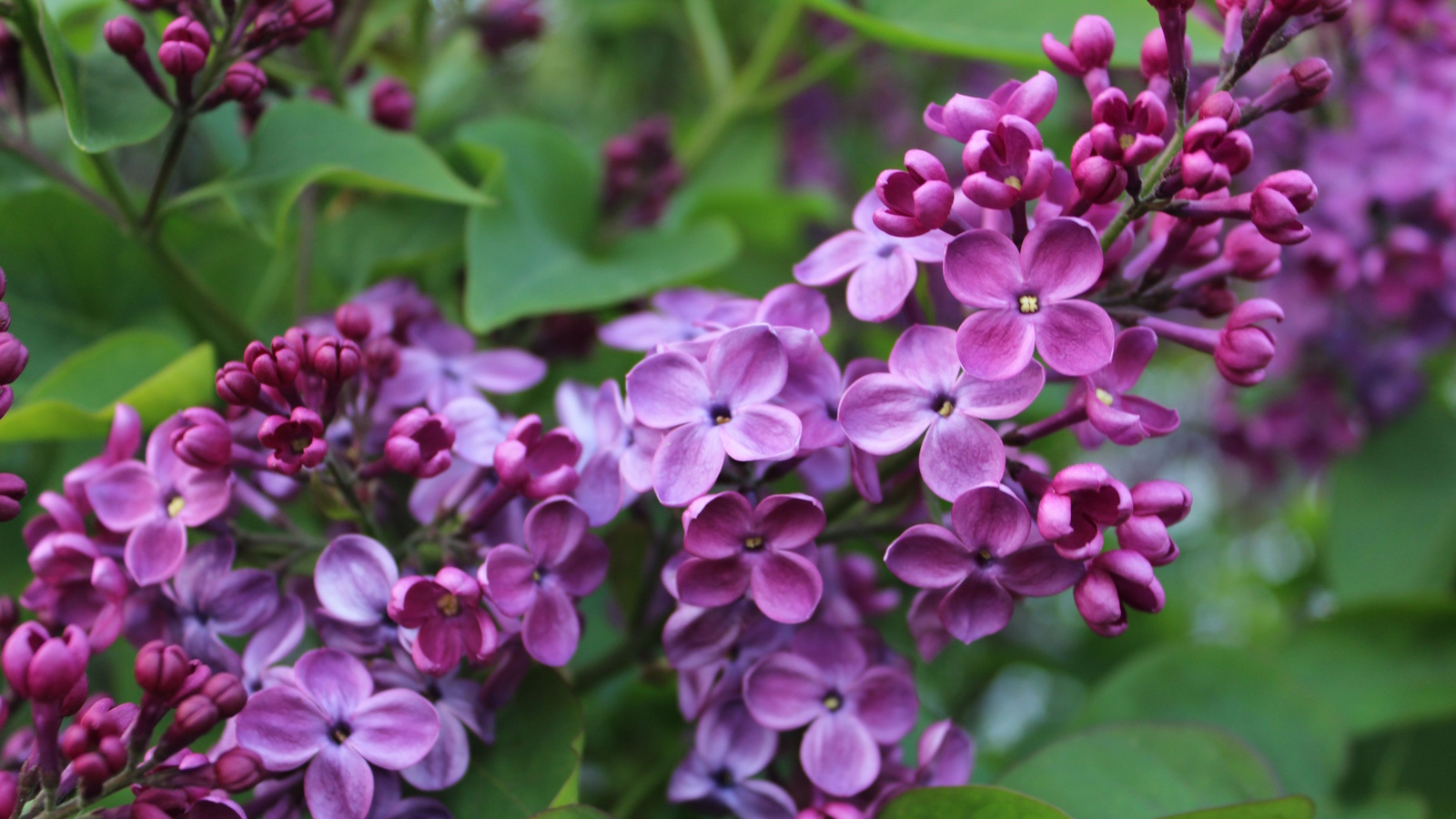 Is it necessary to deadhead lilac flowers? Here's what I've learned after a decade working as a professional gardener
Is it necessary to deadhead lilac flowers? Here's what I've learned after a decade working as a professional gardenerDeadheading spent lilac blooms can help to improve the appearance of your plants, but it won't encourage any more blooms
-
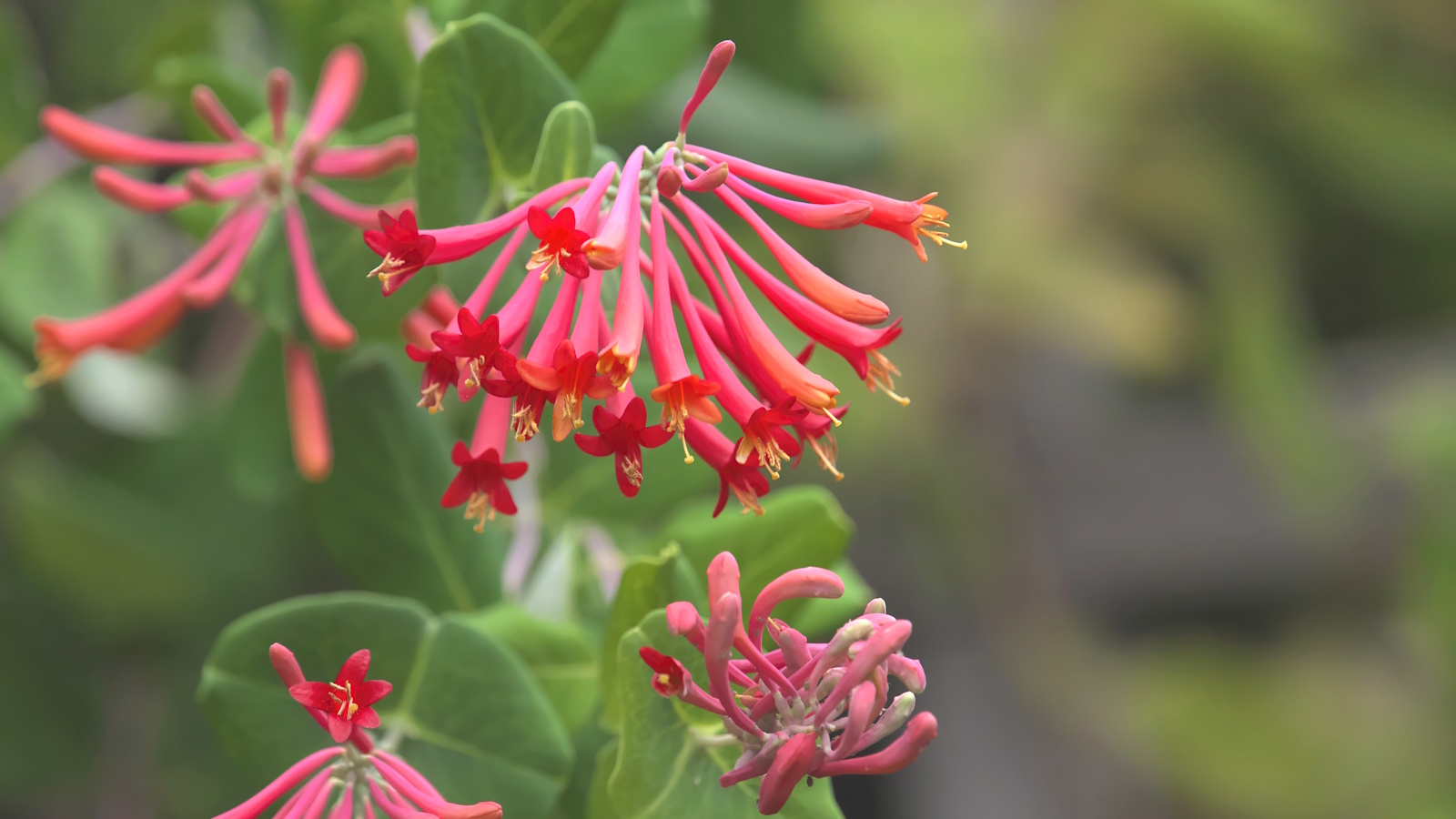 Best climbers to attract hummingbirds – 5 nectar-rich vines with vibrant, colorful flowers to fill pots and borders
Best climbers to attract hummingbirds – 5 nectar-rich vines with vibrant, colorful flowers to fill pots and bordersHummingbirds, butterflies and bees will not be able to stay away from these easy-to-grow flowering climbers
-
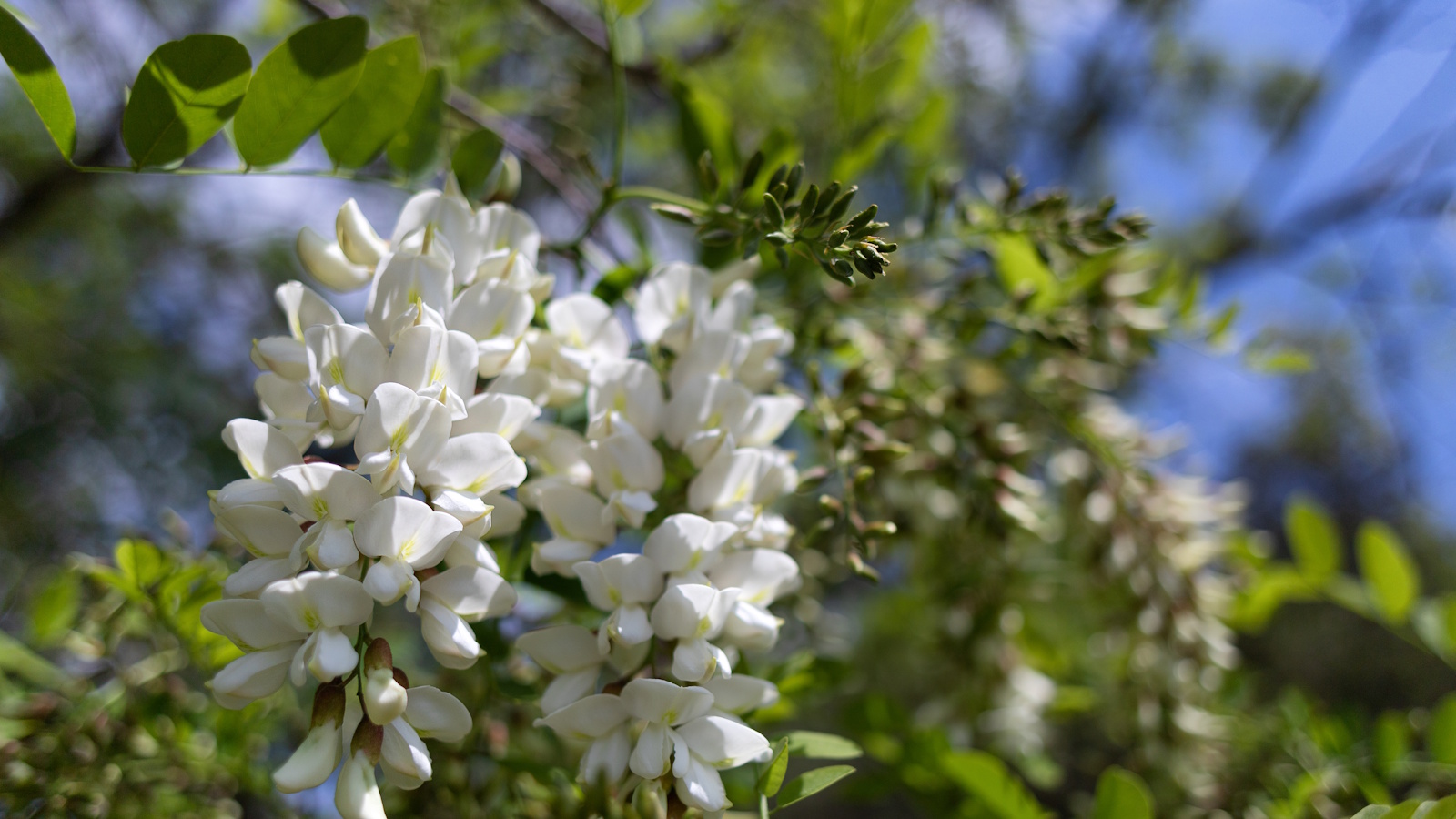 5 plants with thorns and spines to avoid in family gardens – plus the safer alternatives to grow instead
5 plants with thorns and spines to avoid in family gardens – plus the safer alternatives to grow insteadWhile these plants are good for intruder-proofing your yard, they might not be ideal in homes with young children or pets
-
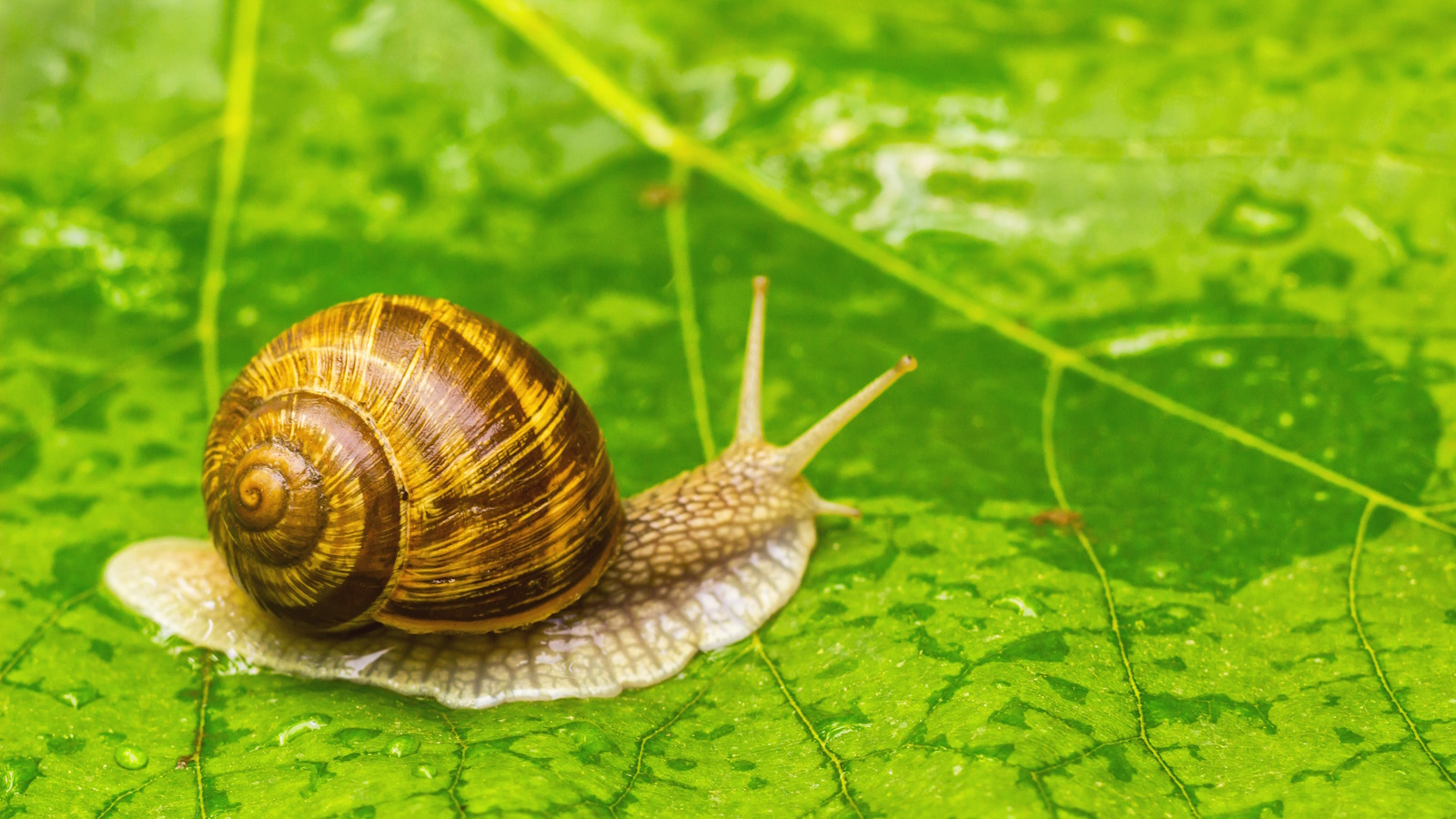 This common vegetable is the best natural defence against slugs and snails – and you probably already have one in your fridge
This common vegetable is the best natural defence against slugs and snails – and you probably already have one in your fridgeHere's how to pest-proof your flower beds and veg garden this year
-
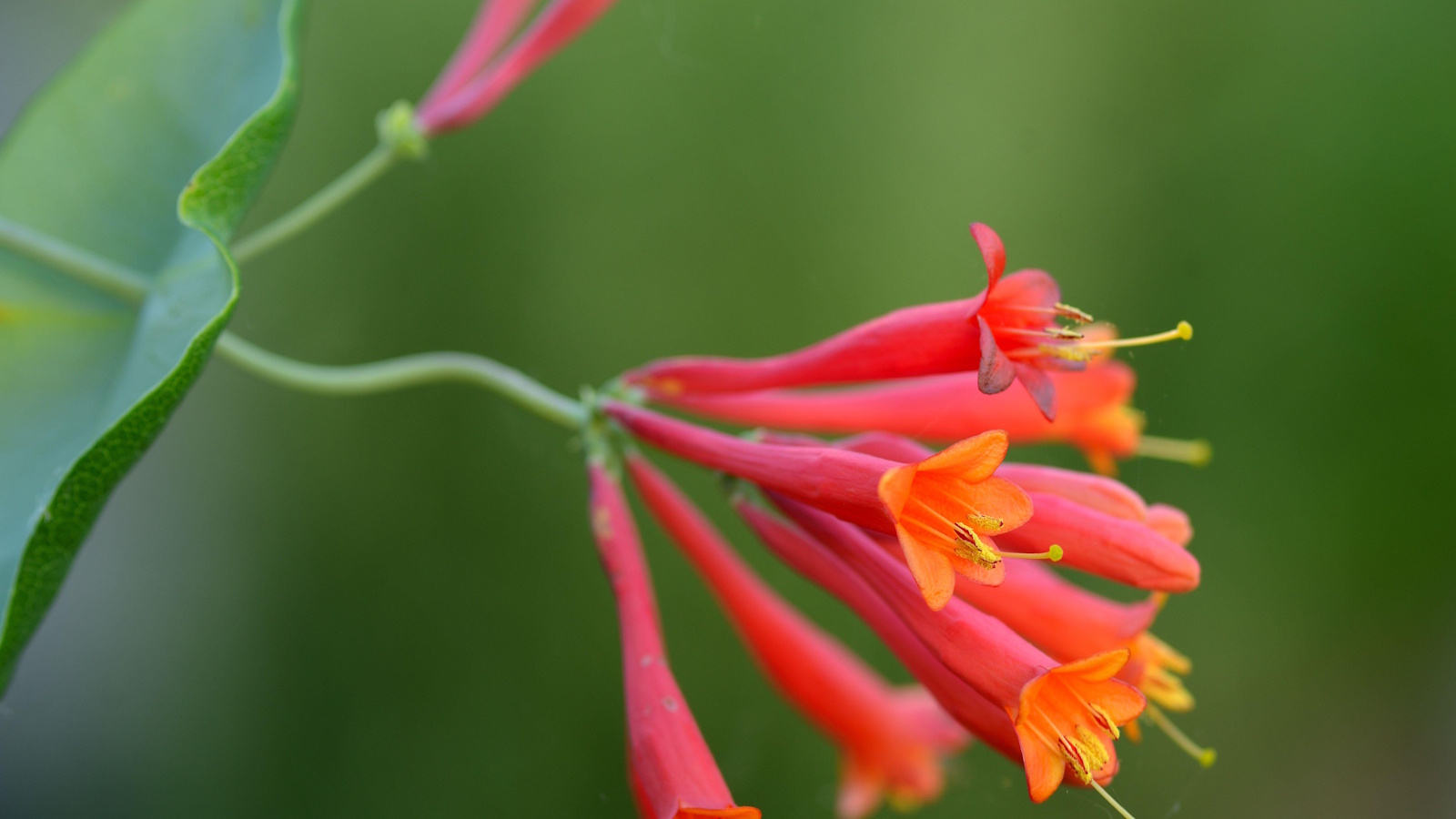 Native alternatives to invasive wisteria – 5 North American climbing plants with spectacular foliage and flowers to grow instead
Native alternatives to invasive wisteria – 5 North American climbing plants with spectacular foliage and flowers to grow insteadThese native vines will fill garden walls, fences and pergolas with greenery
-
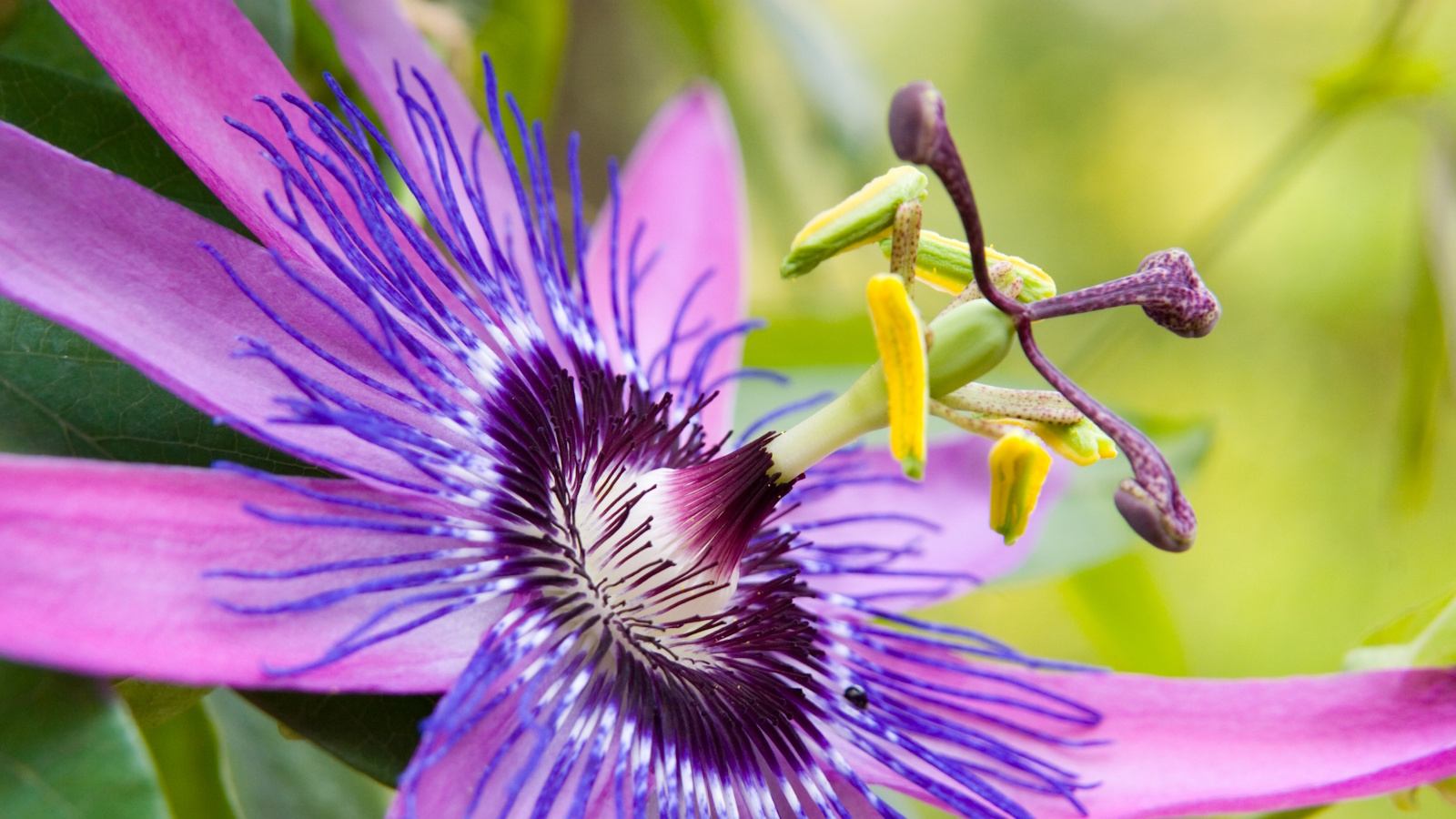 How to grow passion flowers in pots – the ultimate flowering vine that will transform any garden, whatever the size
How to grow passion flowers in pots – the ultimate flowering vine that will transform any garden, whatever the sizeLearning how to grow passion flowers in pots is a great option for gardeners with compact yards
-
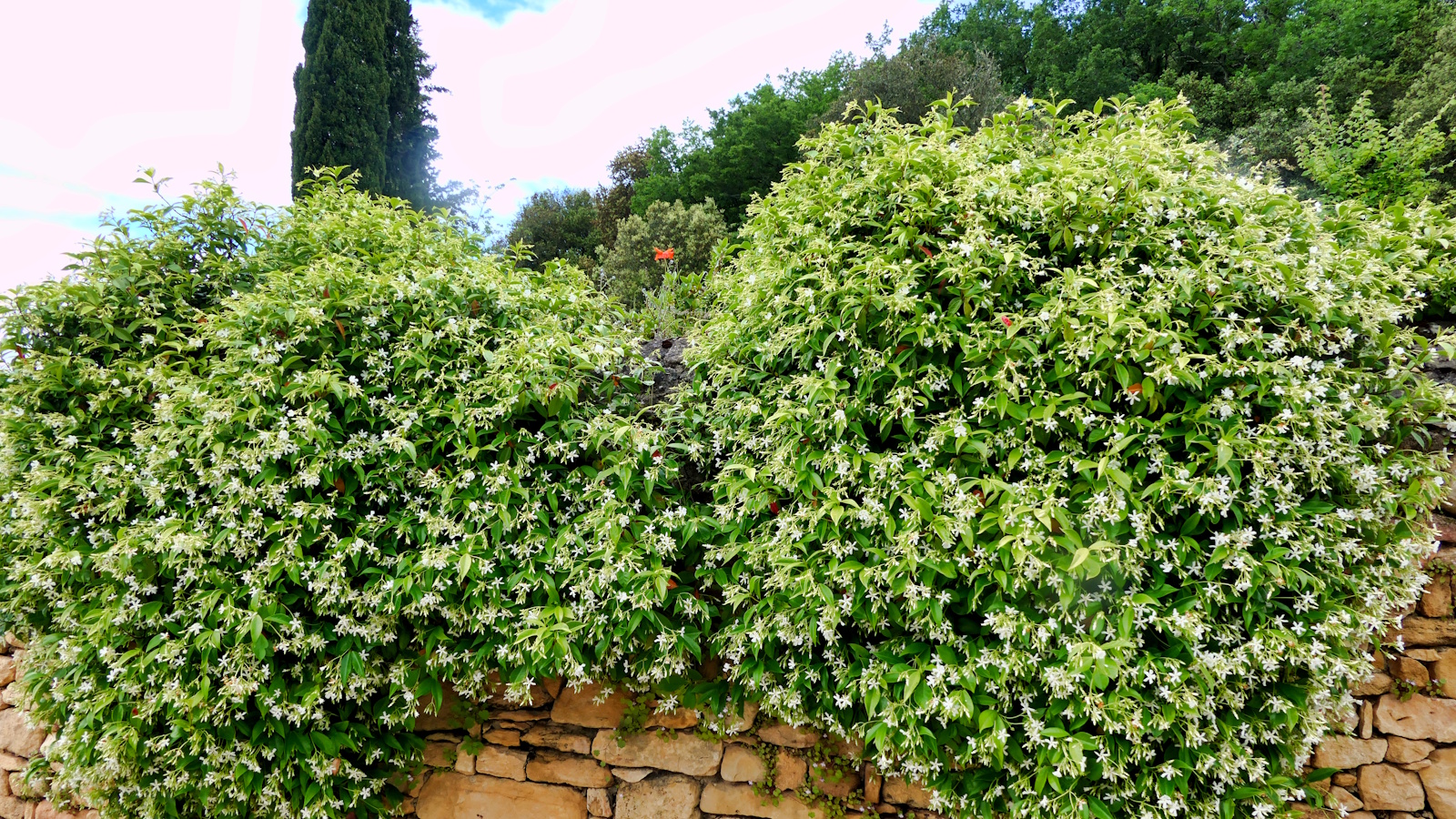 How to fertilize star jasmine – experts reveal the secrets for healthy climbing plants with masses of scented blooms
How to fertilize star jasmine – experts reveal the secrets for healthy climbing plants with masses of scented bloomsFeeding your vines at the right time can give them a boost during the growing season